What to look for when buying an adventure motorcycle.
A CSC RX3 Adventure review and ride report on the White Rim Trail by Randy Reek
“Adventure bikes” are the fastest growing segment of the motorcycle market. An adventure bike is defined as a motorcycle that you can ride across the country. It needs to be able to carry gear for trips lasting from a few days to many weeks. It must handle both paved and unpaved roads. An adventure bike must be comfortable for many hours and many days in the saddle.
That is as much as anyone can agree on. Beyond these characteristics, there are countless opinions as to what is the BEST adventure bike.
Let me give you some of my opinions. My requirements for the IDEAL adventure bike are based on many thousands of miles ridden on several different motorcycles on dirt roads and highways, including the Trans-America Trail, several “Backcountry Discovery Routes” and over 7,000 miles on a solo trip to Alaska.
First, a real adventure bike needs to be comfortable on the highway and keep up with the traffic.
By definition, an adventure bike is a motorcycle that you can pull out of the garage and head down the highway to your chosen destination. Your route may include unpaved roads beyond where street motorcycles turn around. After your ride on mixed roads and trails (an afternoon, a week, month, or more), you rejoin the pavement and mix it up with cars and trucks on the way back home.
As an example of an adventure ride, three CSC RX3 Adventure riders (rbrADV, GSC, and 3banger) recently left Moab, Utah for a ride on the White Rim Trail. We rode our bikes down the highway about 30 miles at 60 mph+ to the start of the unpaved section of the trail. Because the RX3 Adventure has a powerful 250cc motor, liquid-cooling, and a 6-speed transmission it was no problem to maintain the speed limit and even pass slower vehicles on the highway while climbing the bluffs heading away from Moab. We then rode the demanding 90-mile White Rim Trail, then hopped back on the highway for the return trip to Moab in time for dinner.
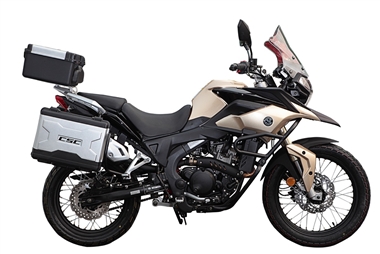
The CSC RX3 Adventure
To provide comfort at highway speeds, the RX3 comes equipped with both a great windshield and wide, rubber-topped foot pegs. The contoured windshield minimizes rider fatigue and the foot pegs isolate engine vibration.
Not to be overlooked, the RX3 Adventure also includes a wide, comfortable saddle. And, while it is a small bike compared to 1,000cc and 1,200cc behemoths, it has just enough weight to NOT get blown around by oncoming traffic. The bike is not cramped for tall riders, and it can be lower for shorter riders.
I learned the importance of these features while riding across the western U.S. while following the route of the Trans-America Trail. I had outfitted a Yamaha WR250R (a street-legal dirt bike) for this extended dual-sport 1,200-mile adventure. Even after adding a foam pad and a sheepskin cover, the hard, narrow seat was miserable for all day riding.
When we hit the pavement sections of the route, oncoming semi-trucks nearly blew me off the road. I tried adding a wind screen to cut down on wind buffeting, but it was only a moderate success – and an expensive after-market option for the dirt bike. I also replaced the stock tiny foot pegs on the Yamaha with larger pegs for another $100. All these modifications are unnecessary on the well-equipped RX3 since it includes a huge list of standard equipment.
Second, an adventure bike needs to seamlessly transition to unpaved roads.
When we reached the end of the pavement in Canyonlands National Park and the start of the White Rim Trail, all we needed to do to the RX3’s was reduce the pressure in our knobby tires to provide more cushioning and better traction.
Of course, this means that a true adventure bike must accommodate knobby tires. The 2018 CSC RX3 Adventure includes a larger 19-inch front wheel and this provides options for knobby tires. Note that “adventure bikes” are not the same as motocross bikes. We are going to be riding unpaved ROADS – not targeting single-track dirt bike trails. For this reason, it is not necessary to have the standard 21-inch front wheel found on dirt bikes. In fact, the slightly smaller and wider 19-inch front wheel provides more stability on both paved and unpaved roads.
The RX3 Adventure has simple and proven spoked wheels with steel rims. Tubeless tires on cast wheels are not repairable in the boonies. I have owned motorcycles with tubeless tires and when riding on extended trips I still carried a spare inner tube and bailing wire to repair damaged tubeless tires. Standard knobby tires with inner tubes are by far the most dependable at lower psi and easiest to repair.
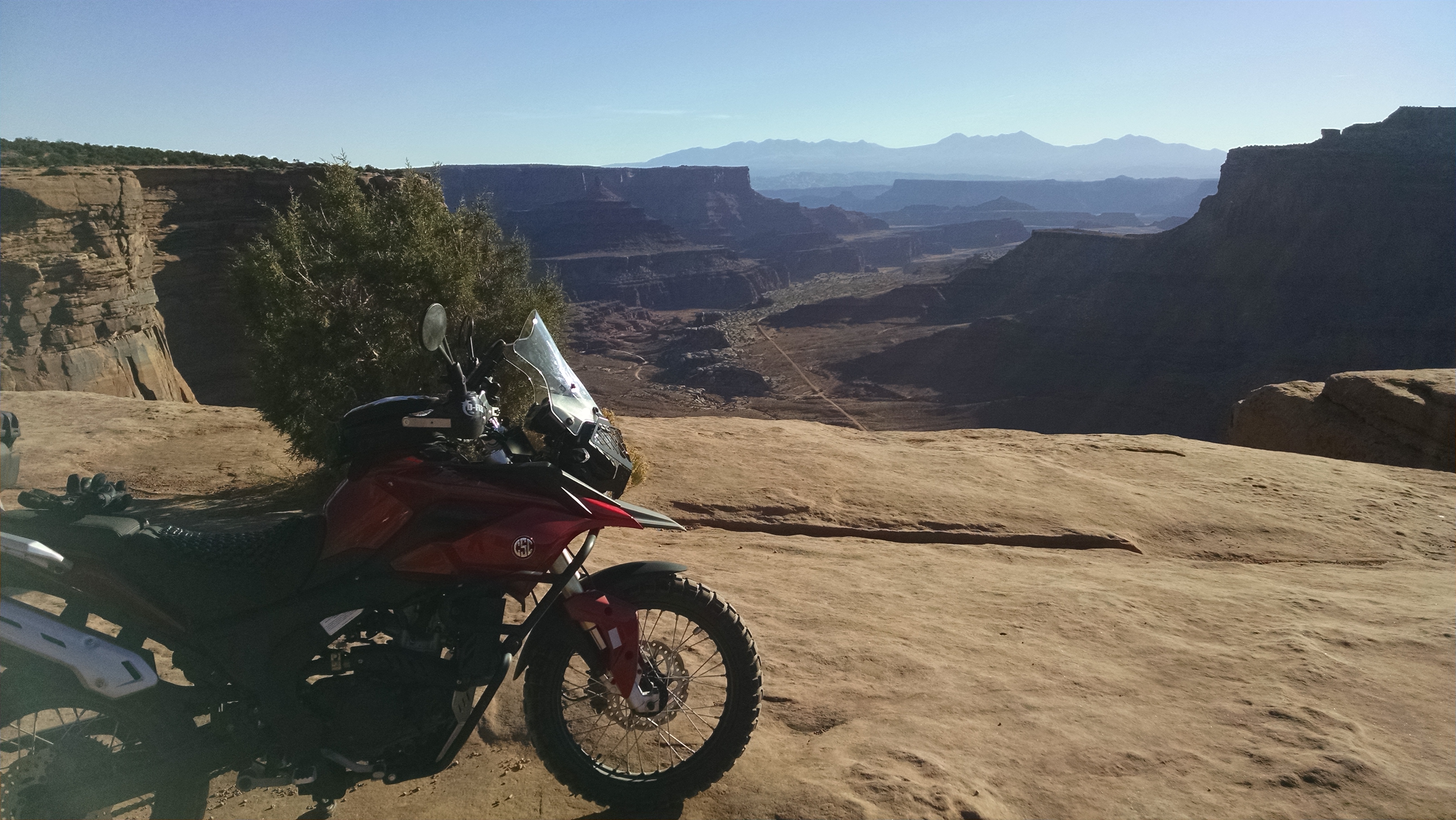
CSC RX3 Adventure at the start of the White Rim Trail.
The CSC RX3 Adventure includes the features required for a motorcycle that will be ridden off pavement. Engine guards are included as standard equipment. I spent hundreds of dollars adding protective guards to every other bike that I owned. The RX3 has wide fenders spaced properly above the knobby tires. I once owned an expensive Triumph Tiger 800XC and installed an accessory “lift” for the front fender. Even after buying and installing this lift, I still broke off the $250 front plastic fender in the sticky Utah mud when the tires clogged. The RX3 also includes a base steel skid plate, with a larger and more protective aluminum skid plate available as an option – shown above.
You may have a different definition of a “dual sport” bike. If you want a motorcycle for day trips AND riding single track, mud bogging, and hill climbs you are not going to want a CSC RX3. If you want a street-legal dirt bike that can jump logs you should consider the CSC TT250 Enduro. Most lightweight dirt bikes simply don’t meet the comfort requirements of a true adventure motorcycle designed for thousands of miles in the saddle.

The Shafer Switchbacks, descending 1,000 feet to the White Rim Trail

The bottom of the Shafer Switchbacks (We started at the top of the rim above!)
Third, a great adventure bike should be designed for multi-day extended travel.
Every other “adventure bike” that I have owned required hundreds, even thousands of dollars of additions to prepare for long distance travel. My single biggest complaint related to dual sport bikes is the cost to add a larger gas tank. It is obvious that when a motorcycle is equipped with a gas tank of TWO gallons that it was never designed for extended touring.
Many dirt bikes have been converted to “ADV-lite bikes” with after-market gas tanks, typically costing $400 or more. You sacrifice the original tank for a plastic accessory tank. Your gas gauge (if you had one) no longer works and you never know how much fuel you have – unless you choose the ugly translucent plastic version.
In contrast, the RX3 Adventure comes equipped with a 4.2-gallon steel gas tank with a locking gas cap (keyed to the ignition) AND a fuel gauge on the dash. This is ideal for an adventure bike, providing well over a 200-mile range between refills. The right-sized gas tank on the RX3 also means we don’t need to purchase, install and carry extra gas cans.

There are NO gas stops on the White Rim Trail. We made the 150-mile loop on a little more than half a tank of fuel. We did not need to add weight by carrying extra gas.
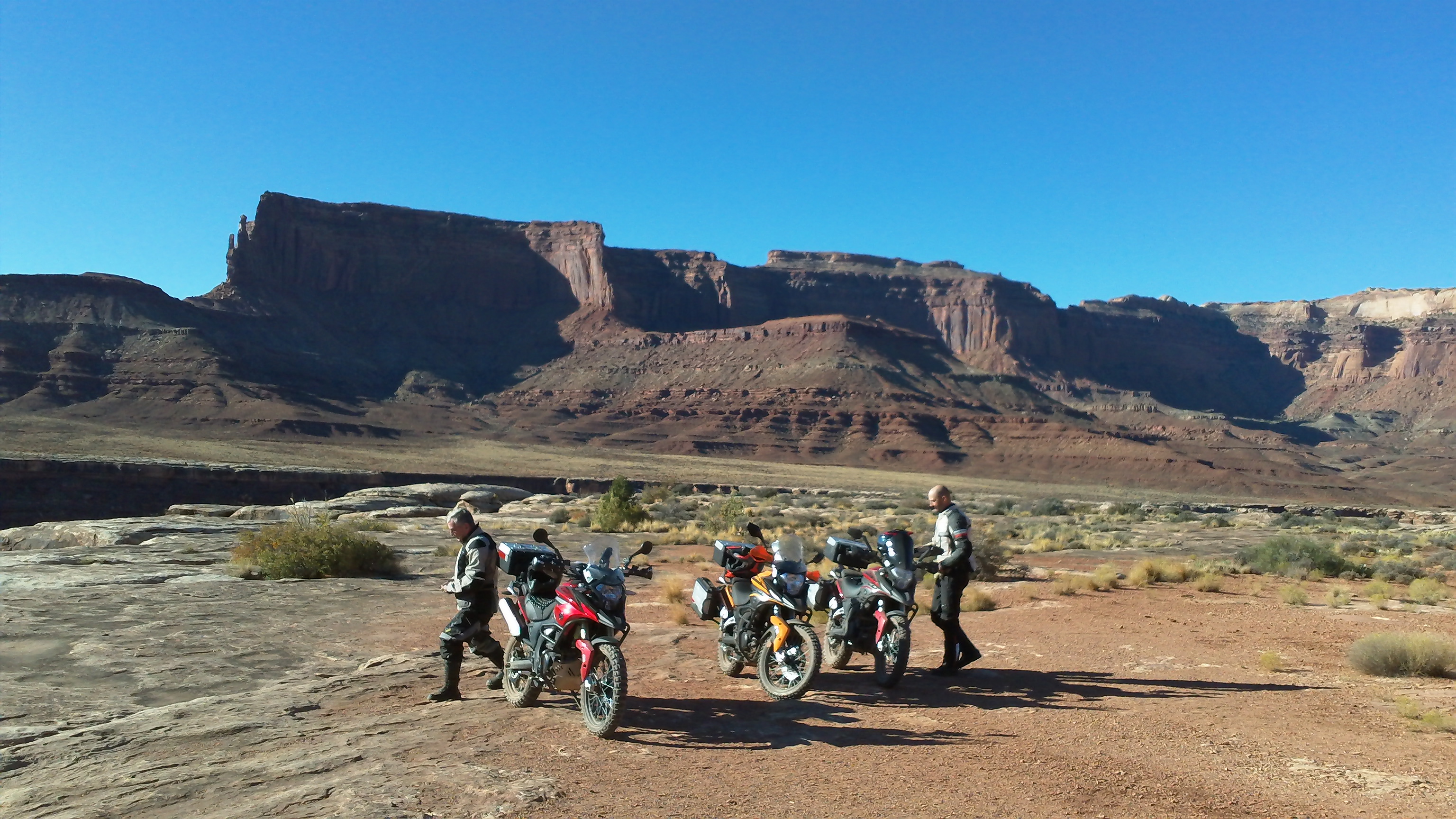
Photo Stop at Musselman Arch

Musselman Arch on the White Rim Trail
Virtually all “dual sport” motorcycles also require that you spend lots of money adding racks and luggage. You can’t add a rear top case until you first buy the accessory rear rack. Before you can mount your expensive side cases, you need to spend several hundred more dollars to buy the supporting side rack system. There are multiple suppliers for the required hardware and luggage to properly outfit your “adventure bike” – typically exceeding $1,000 over and above the cost of the motorcycle, and not including hours of installation labor!
Once again, the CSC RX3 Adventure comes equipped – as standard equipment – with a rear rack and top case and side racks and side cases. This luggage is designed for the motorcycle and is not cobbled together. In fact, the three cases are even keyed to match the ignition key!
Note: the standard cases on the RX3 Adventure are not large. Larger hard and soft cases are available as an option from CSC Motorcycles. But most adventurers carry WAY too much stuff. I would strongly recommend limiting your gear to what you can pack in the standard RX3 cases provided PLUS a small duffel bag across the passenger seat. You can also add loops for a second stuff sack on the lid of the top case, as I did. But overall you will find that smaller is better, especially when traveling light on the 250cc RX3 Adventure.

Endless canyons on the White Rim Trail. None of this scenery is accessible to street bikes or atv’s!
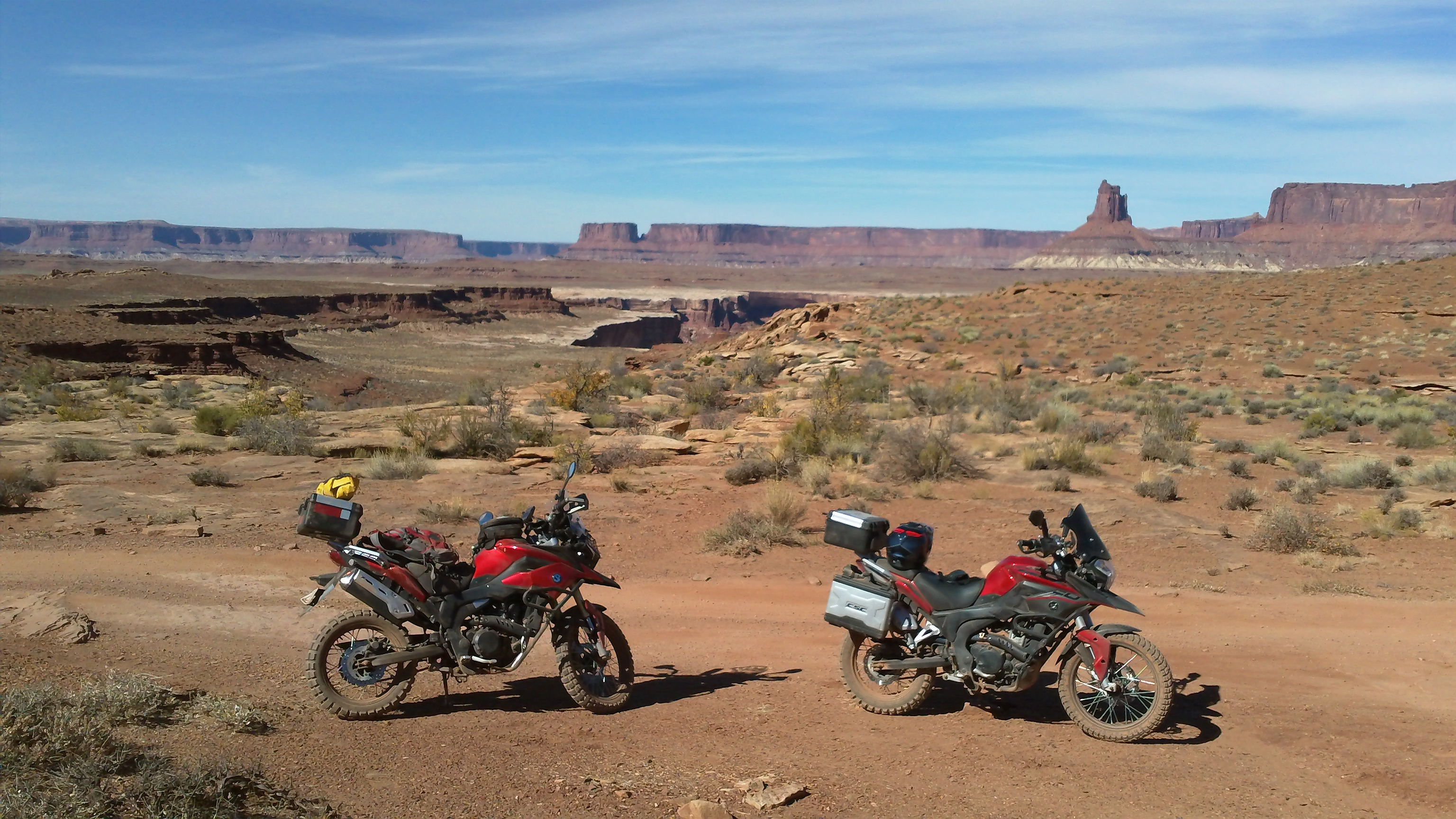
The RX3 on the left has the side cases and racks removed. The RX3 on the right is shown with the standard side cases.
Finally, an adventure bike needs to be light, simple and dependable.
The trend today is for new motorcycles to be big, heavy and complicated. This is the opposite of what you want for trouble-free, extended travel. A motorcycle that has 1,200 cc’s and weighs 600 pounds – BEFORE you add gas, gear and the rider is NOT a realistic adventure bike – unless you are traveling with a support crew like Long Way Round.
You want a bike that you can pick up by yourself! You want a bike that you can manage on your own when your riding partners are around the bend or over the next hill. The CSC RX3 Adventure is not a featherweight at 385 pounds, but that stock weight also includes all the equipment that would need to be added to other bikes that start out weighing less.
You also don’t really NEED three different traction modes, four electronic shift patterns and multiple braking options to enjoy an adventure. Keep it simple and ride! Besides, no dealer is going to have the electronic module in stock when these finicky components fail so you are setting yourself up for delays and frustration.
The CSC RX3 Adventure has a dependable Delphi fuel-injection system and electronic ignition. Beyond that, the simple 250cc single cylinder 4-stroke engine can be repaired by most shade-tree mechanics. In fact, parts are covered by the CSC warranty for 2 years and labor is covered for 1 year. RX3 owners can go anywhere for repairs since there are no dealer restrictions. There are NO dealers – you deal directly with ONE company, the exclusive importer, CSC Motorcycles. The engine manufacturer, Zongshen, builds over 3 MILLION motors per year, including motors for many name-brands. Zongshen builds over 1 million motorcycles per year and these are sold under various brands worldwide.
Simple functionality doesn’t mean that the RX3 Adventure is stripped down. The bike also includes features not found on many motorcycles at any price! The CSC RX3 includes a 300-watt alternator to accommodate electrical accessories, with two accessory switches already pre-wired on the handlebars. There is an analog speedometer and a digital tachometer, fuel gauge, odometer, trip meter, temperature gauge, clock, and gear indicator on the dash. Accessory 12-volt and USB outlets are also available and are designed to be added to the dash, not tacked on.
One more thing: an adventure bike needs to be FUN to ride!
Many of us have more than one motorcycle. If you could have only one motorcycle, I can make a strong argument that you can’t go wrong with a CSC RX3 Adventure. But – if you have more than one bike – there is always one gets the most attention. This is the case with the CSC RX3 Adventure. If you have experience on larger motorcycles, you will agree that the lighter RX3 is just plain fun. Get on, rev it up, and simply ride it anywhere and everywhere.

Three RX3’s on a 150-mile adventure!
The RX3 Adventure is comfortable to ride for long distances. Compared to the highly advertised, 1,000 or 1,200 cc “Dual Sport” super bikes, it is lightweight and maneuverable. It sits lower than dirt bikes so it instills confidence on sketchy surfaces. Compared to bigger adventure and street bikes, the RX3 feels “flickable” on the road and in the dirt.
Of course, you can always make modifications and further customize your RX3 Adventure. For example, I removed the rear cases and racks for trail riding and carved off over 30 pounds. I added billet aluminum guards to protect the headlight and side radiators from rocks. Both replacement parts and a wide selection of accessories are great values from CSC. You do not need to pay exorbitant prices elsewhere!

Having fun in the high desert on the CSC RX3 Adventure: White Rim Trail
Here is the bottom line: you can spend A LOT more for an adventure bike. But you are not going to have more fun, go farther, or create better memories. In fact, with the money you save on a CSC RX3 Adventure, you can start NOW and rack up more miles!
There are endless debates as to what is the perfect bike for adventure riding, including the planned routes like the Backcountry Discovery Route series and the Trans-America Trail. Having ridden all of these on other motorcycles, I would now choose the CSC RX3 Adventure. I would give up nothing over the bigger and more expensive bikes that I have ridden. I would gain comfort and capacity over the dual sport bikes I have ridden. And I would have spent one-half to one-fourth as much to log the same exact miles!

The completion of the White Rim Trail 60 miles on road and 90 miles of extreme back country adventure!
If we can ride the White Rim Trail, you can ride any of the BDR’s or the TAT on your own RX3 Adventure!
For videos of this adventure on the White Rim Trail, check out Part Two or visit my YouTube Channel: rbrADV
For more information on CSC Motorcycles, see: www.cscmotorcycles.com
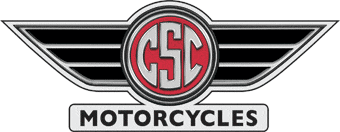





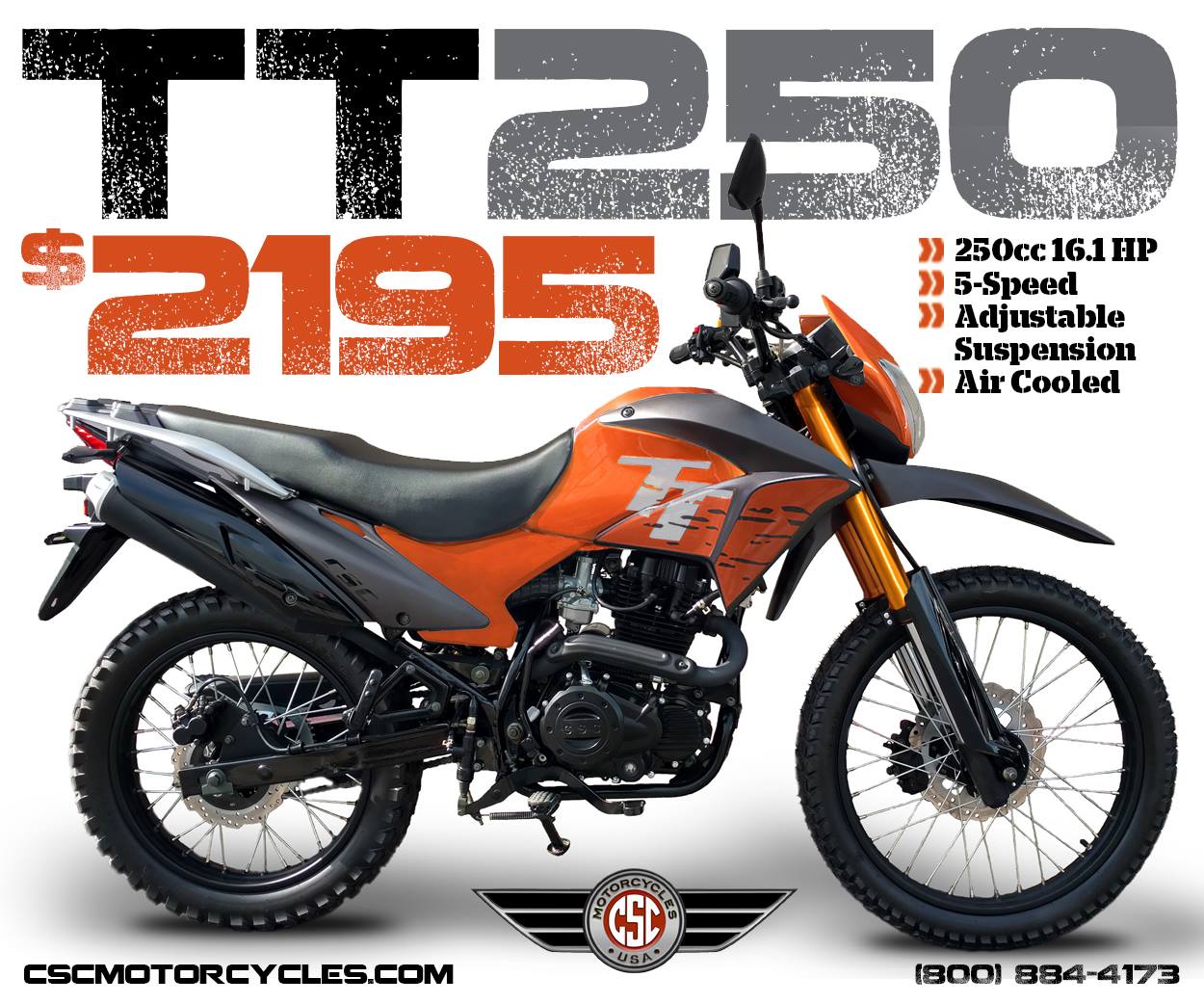
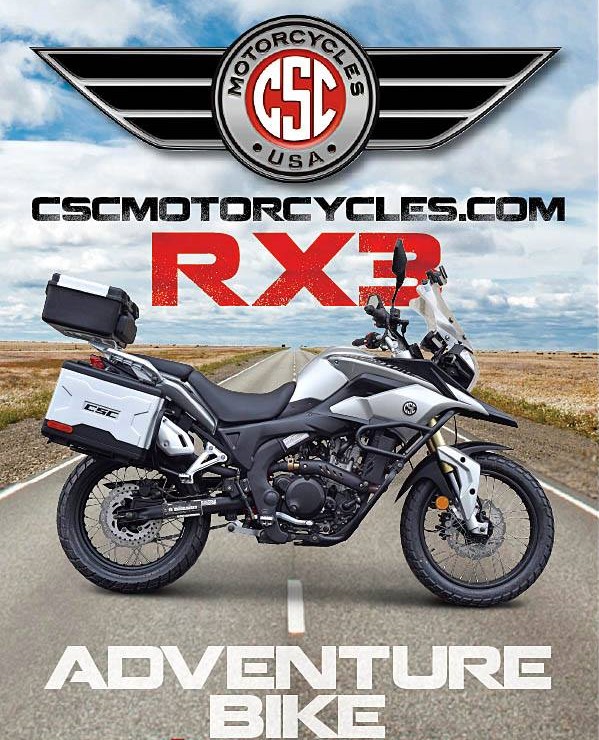
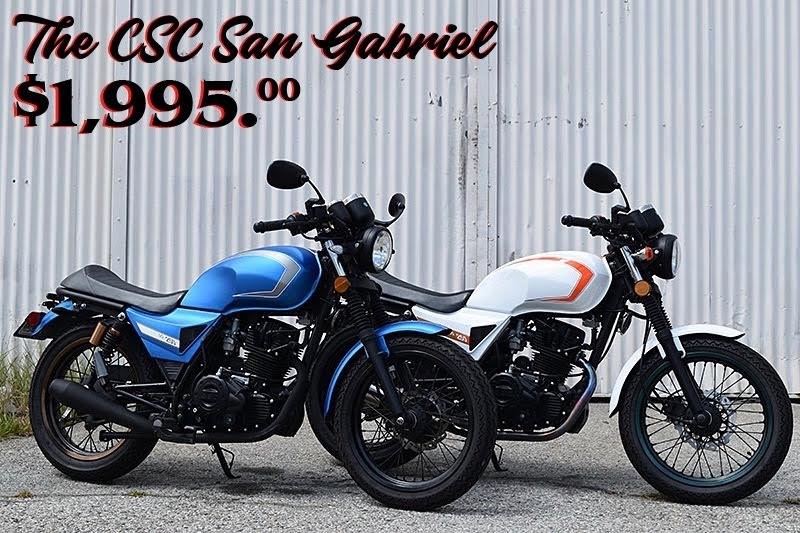
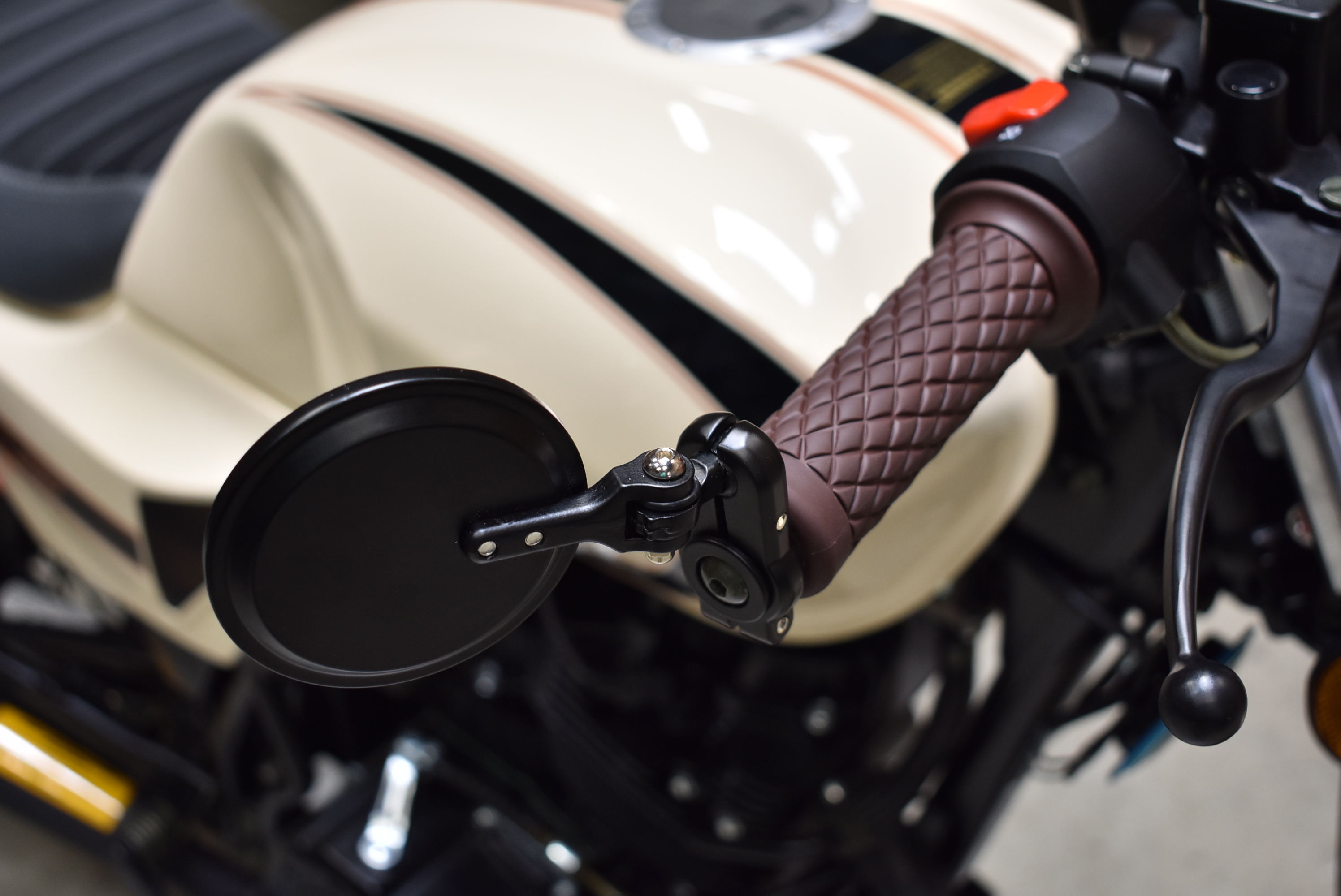
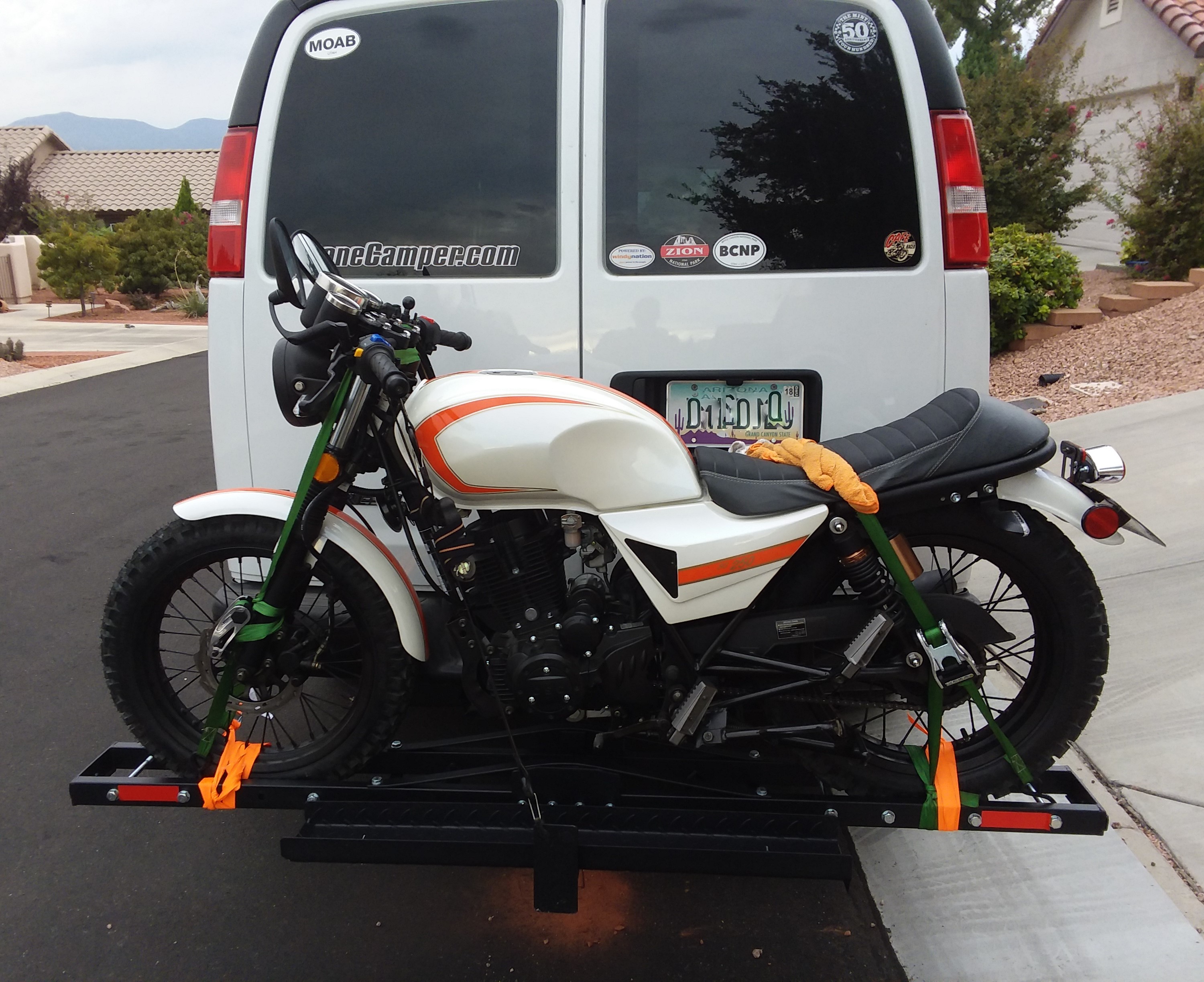
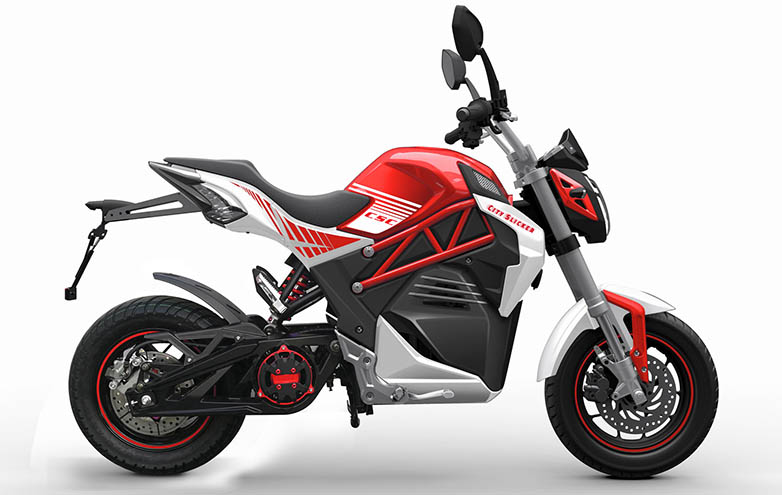
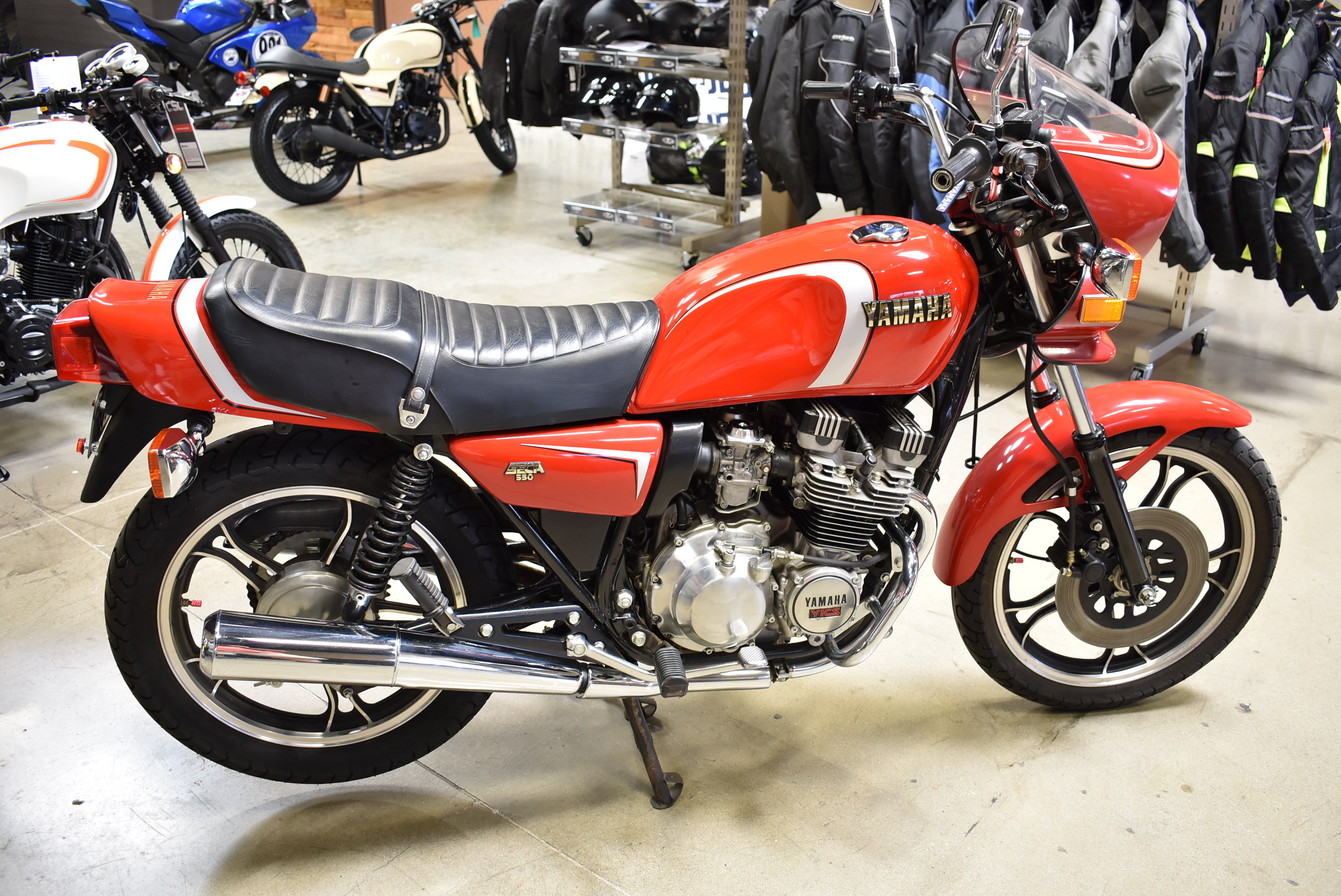
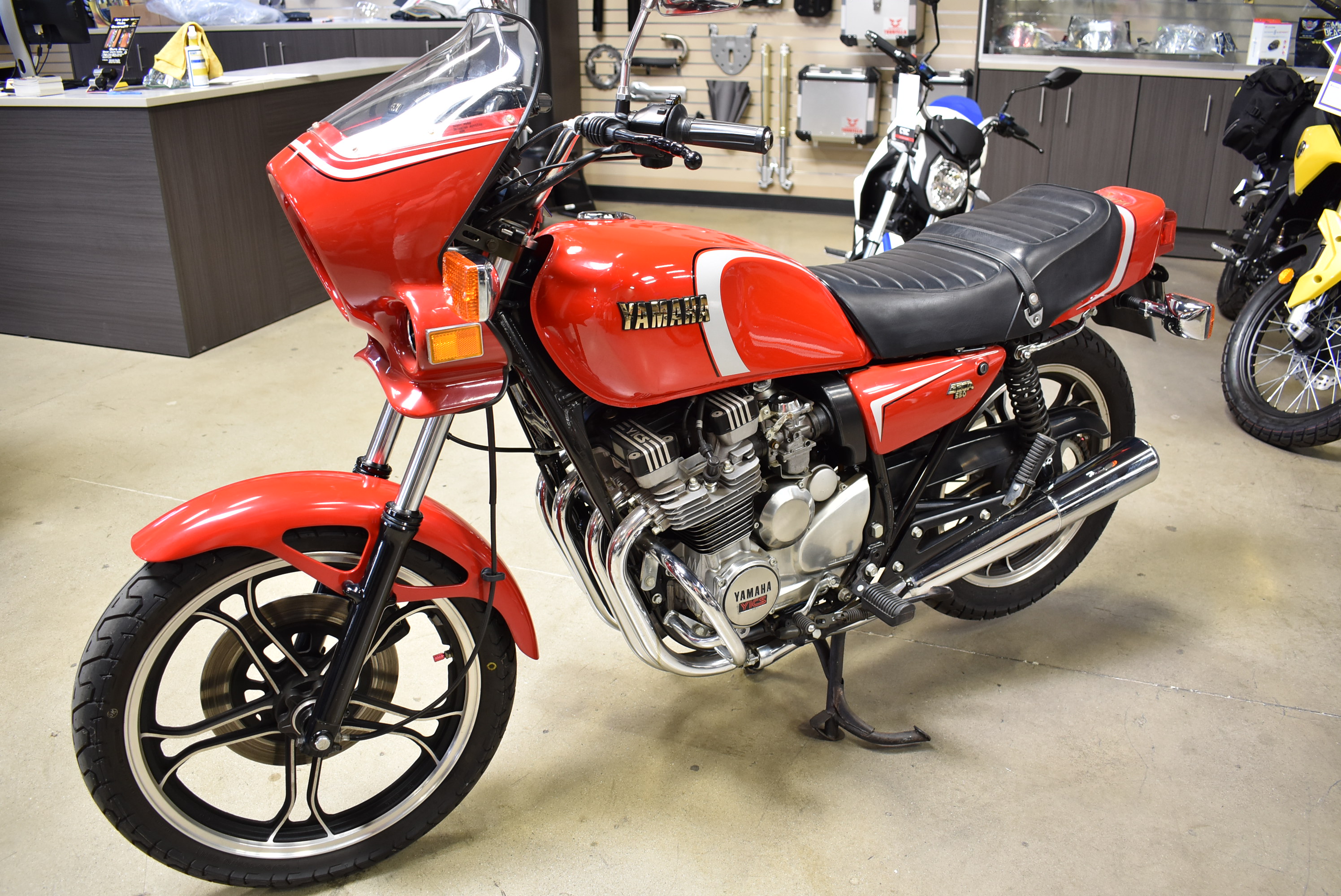
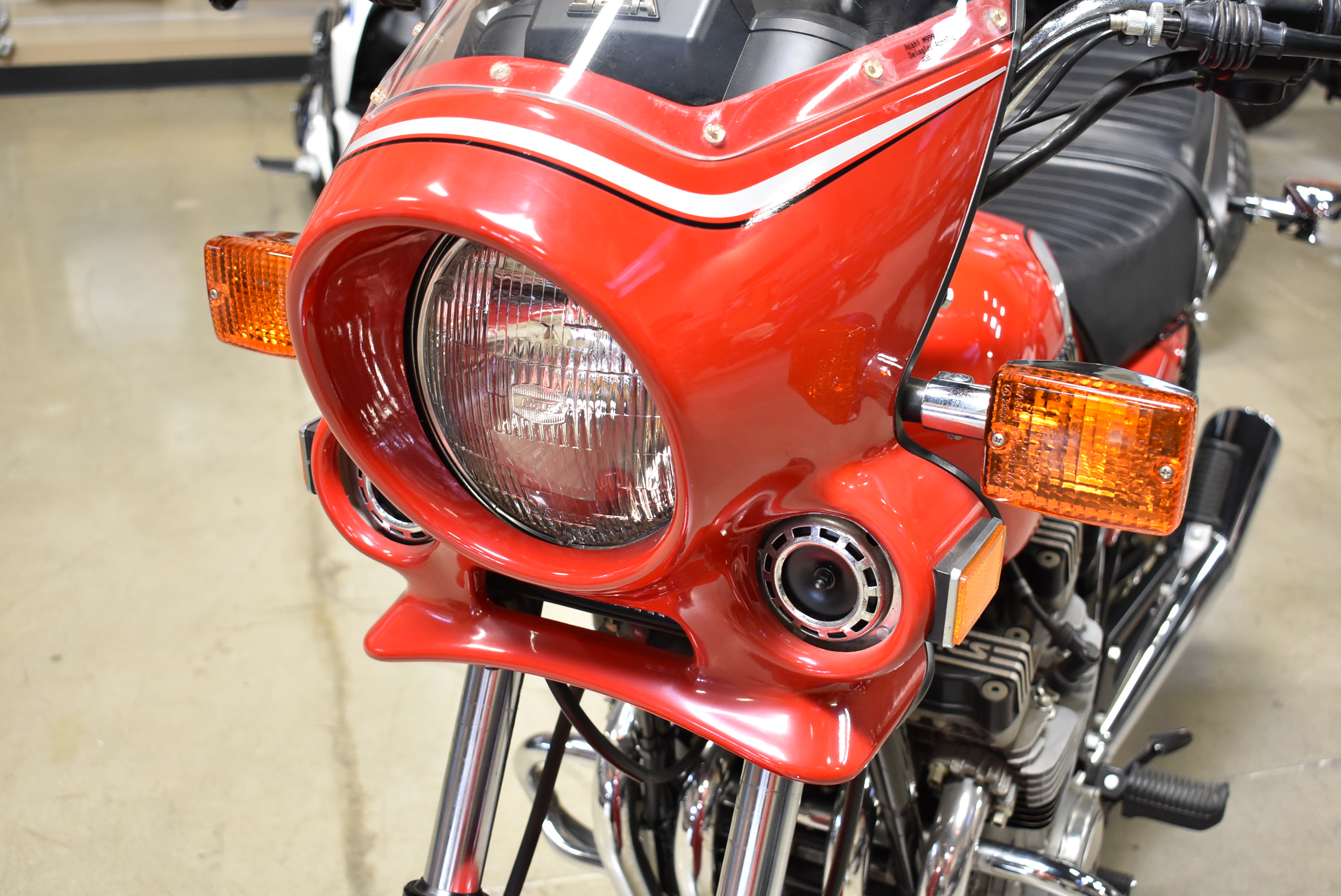
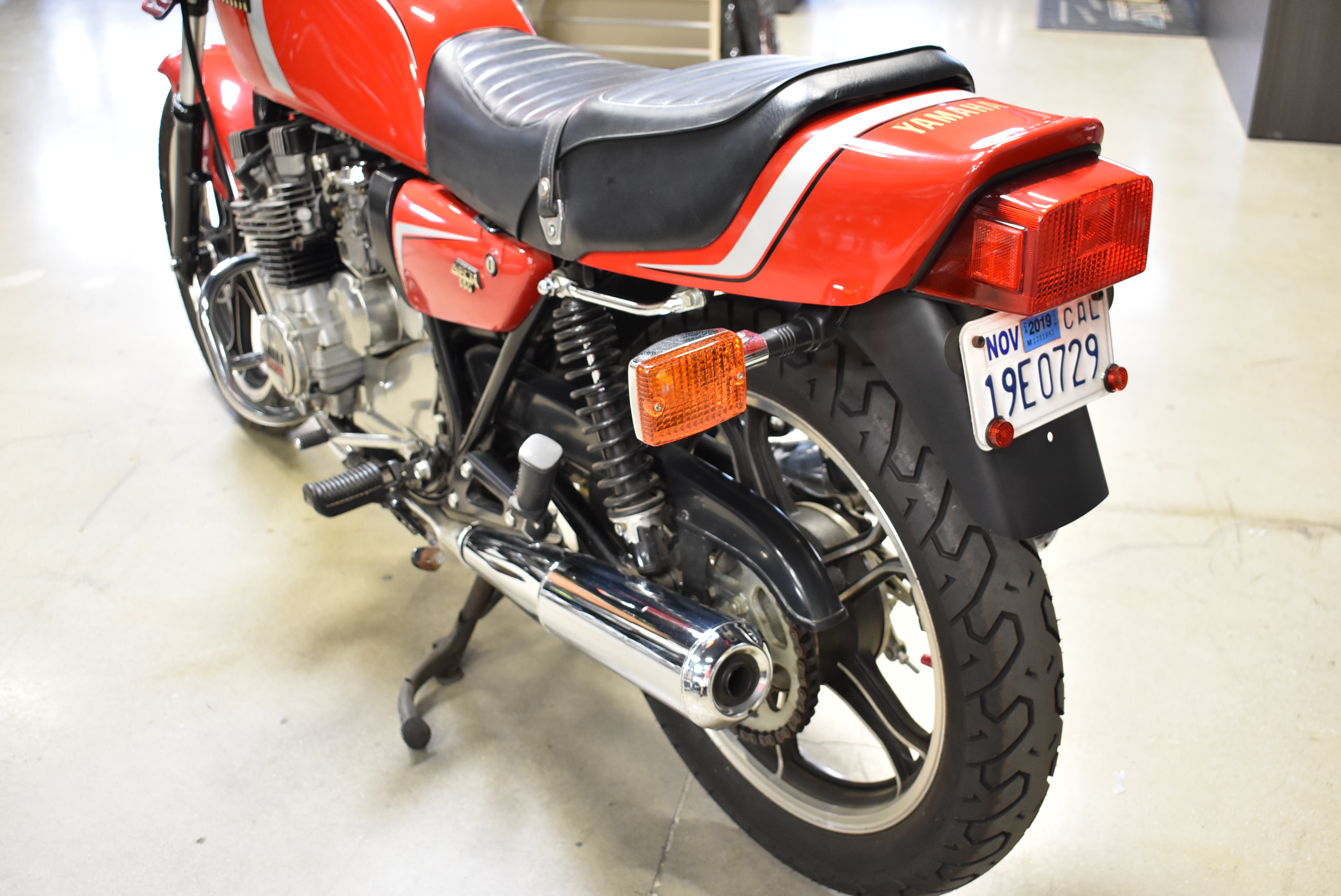
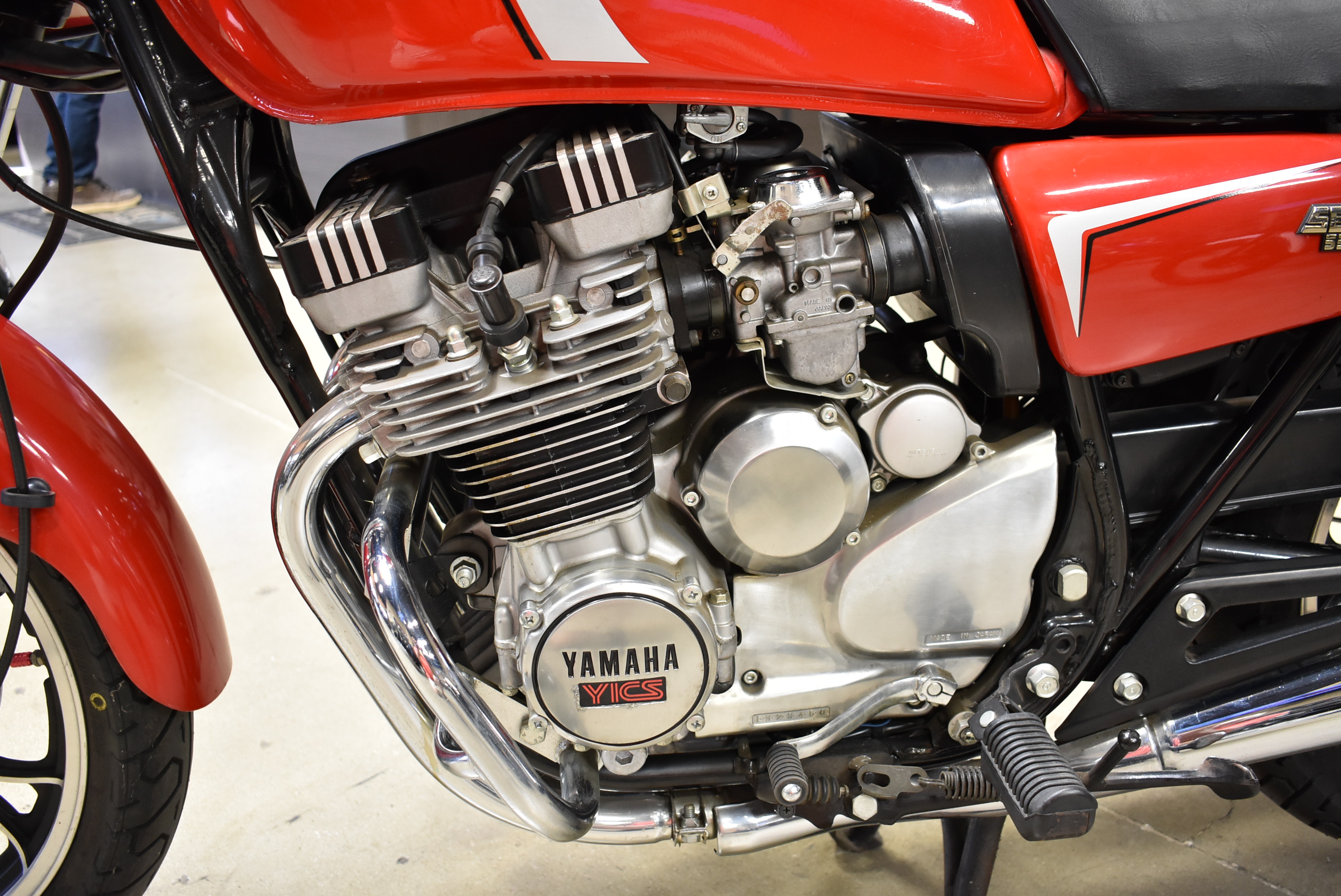
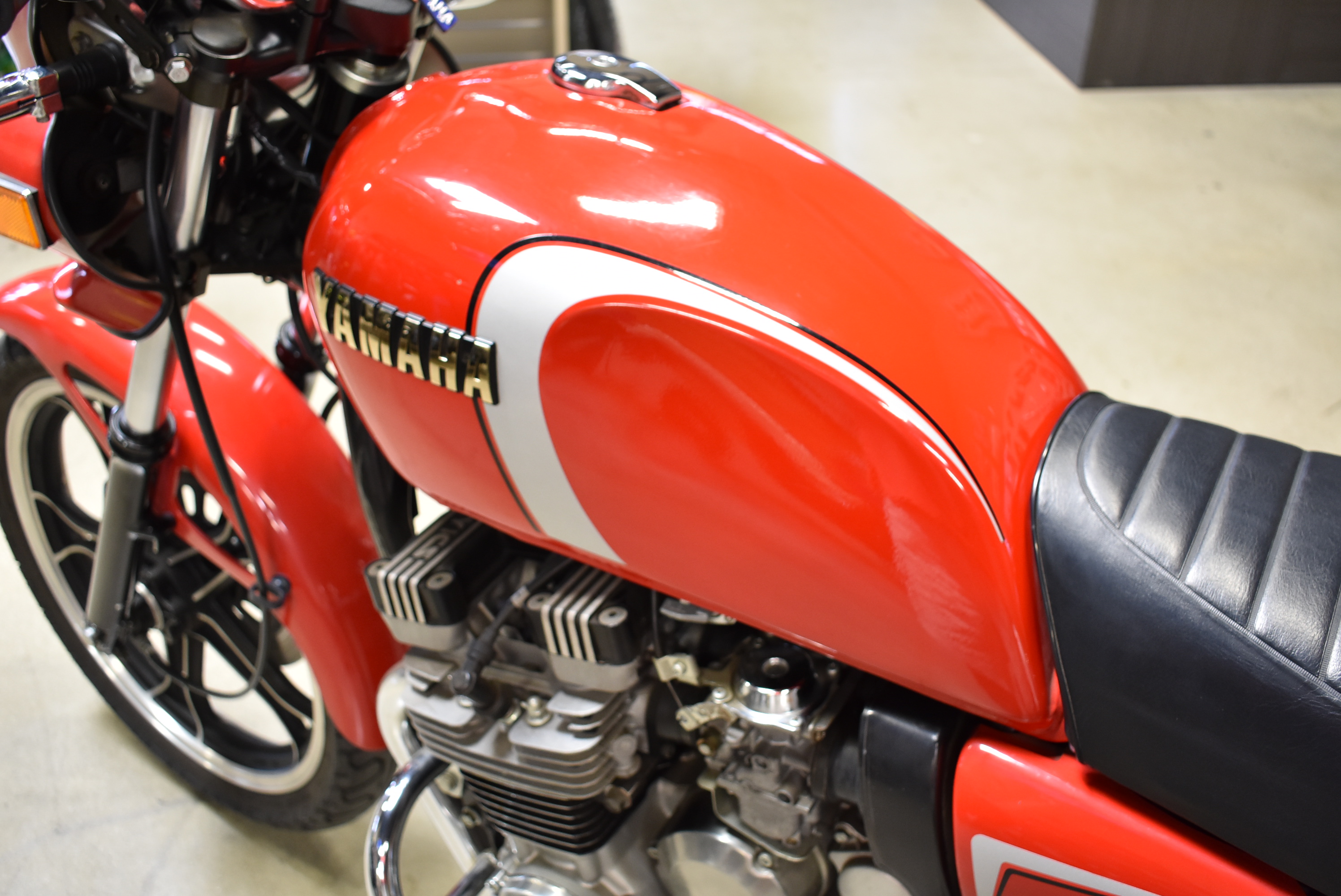
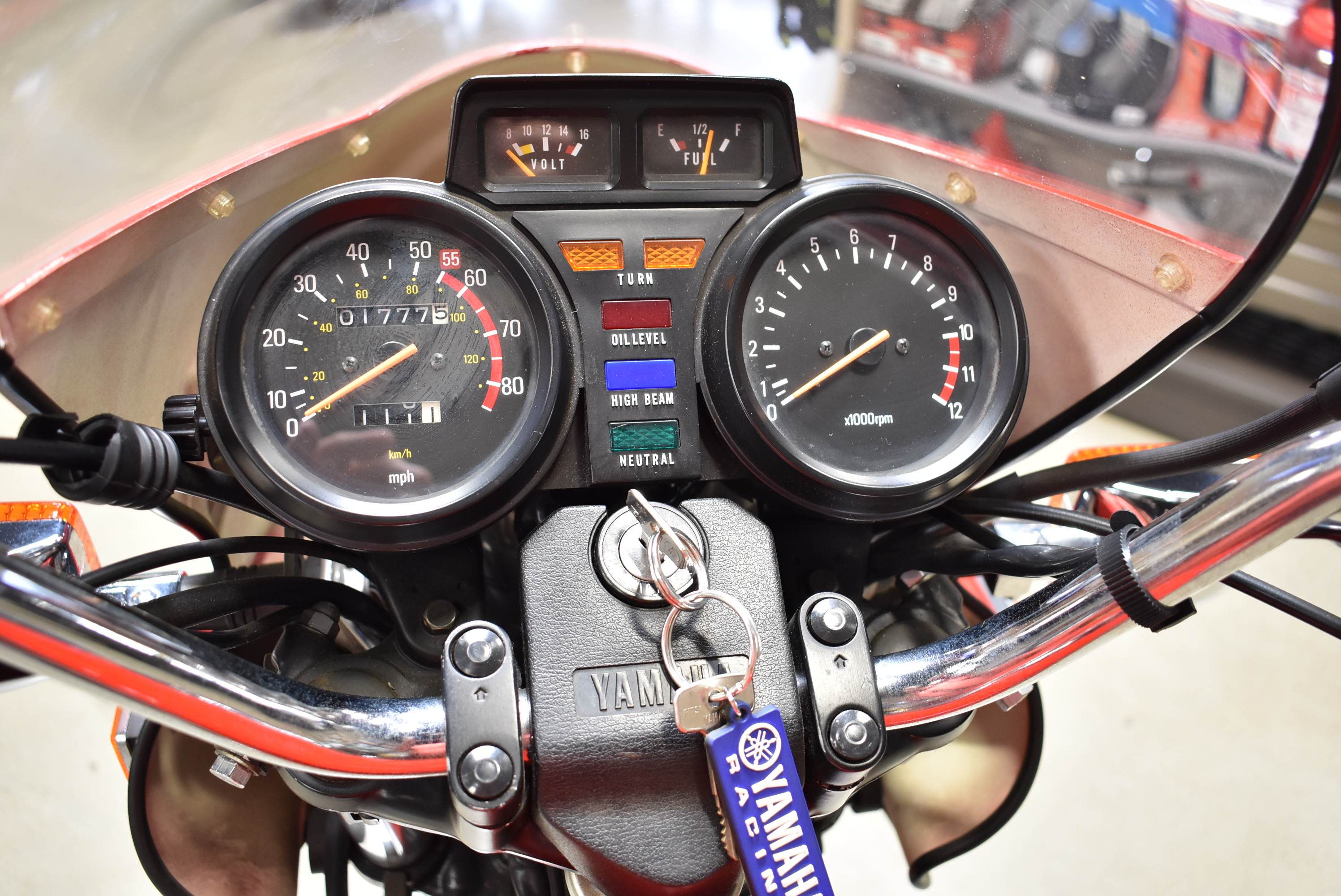












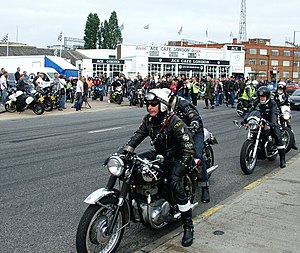
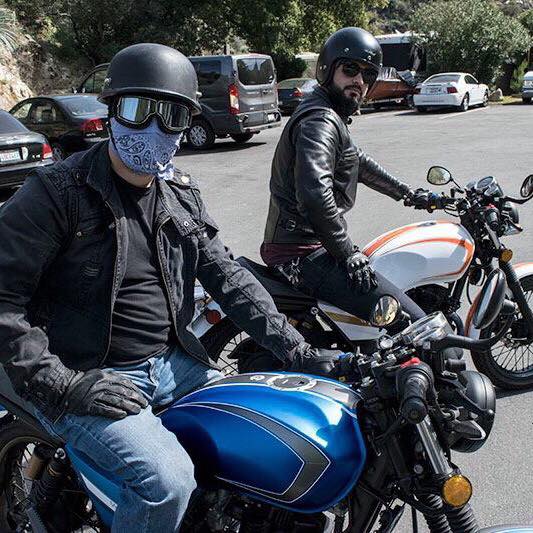
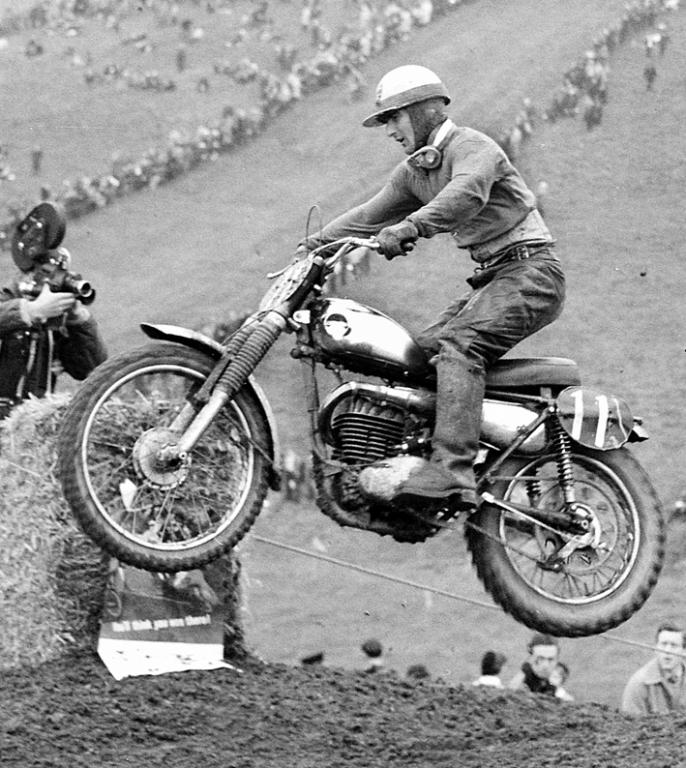
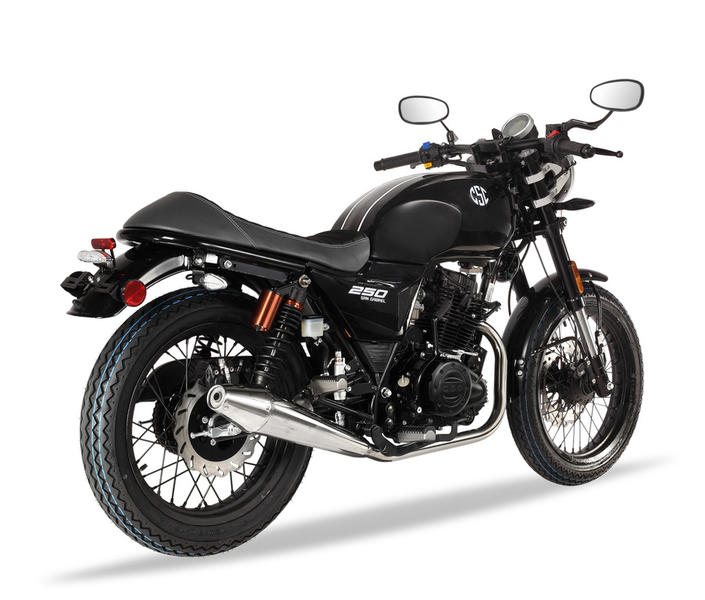
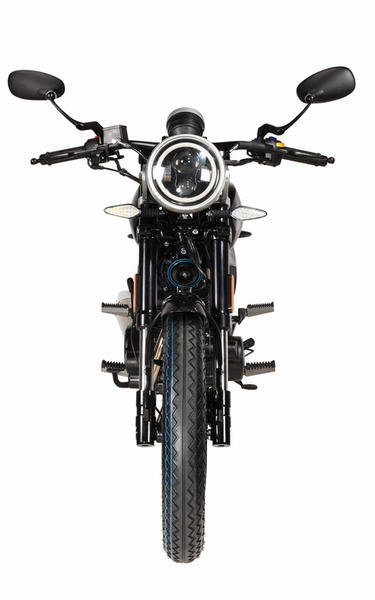
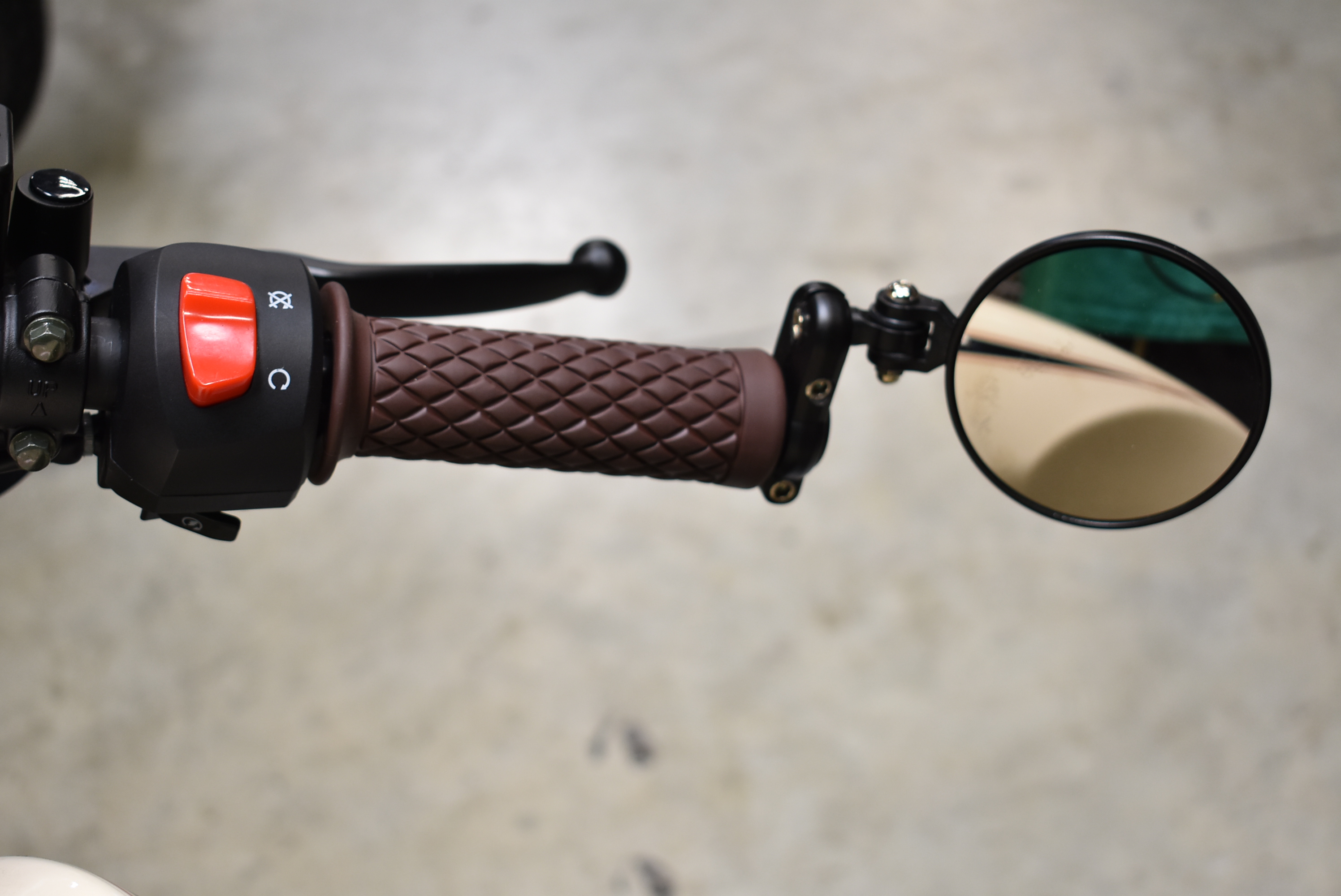
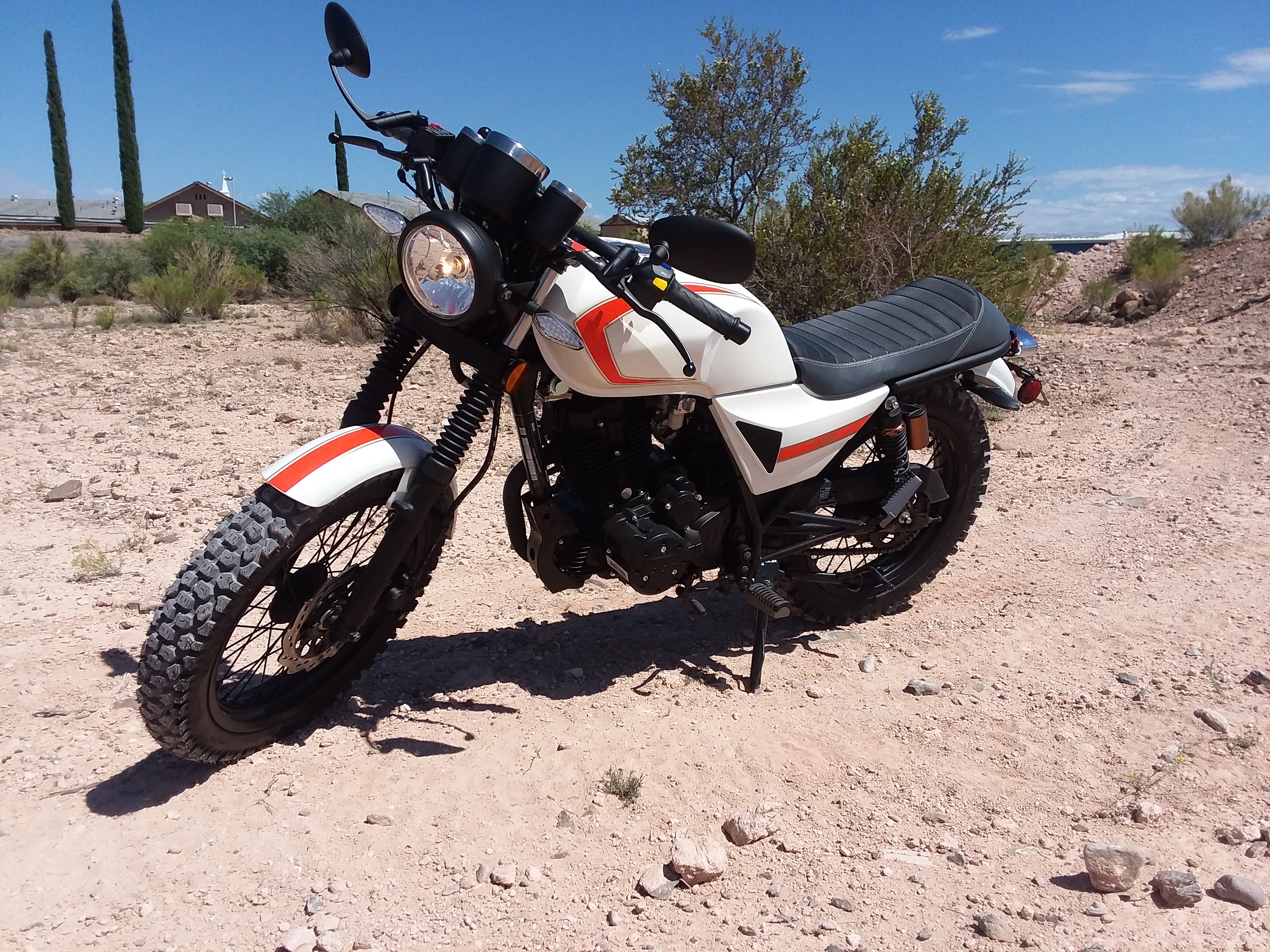
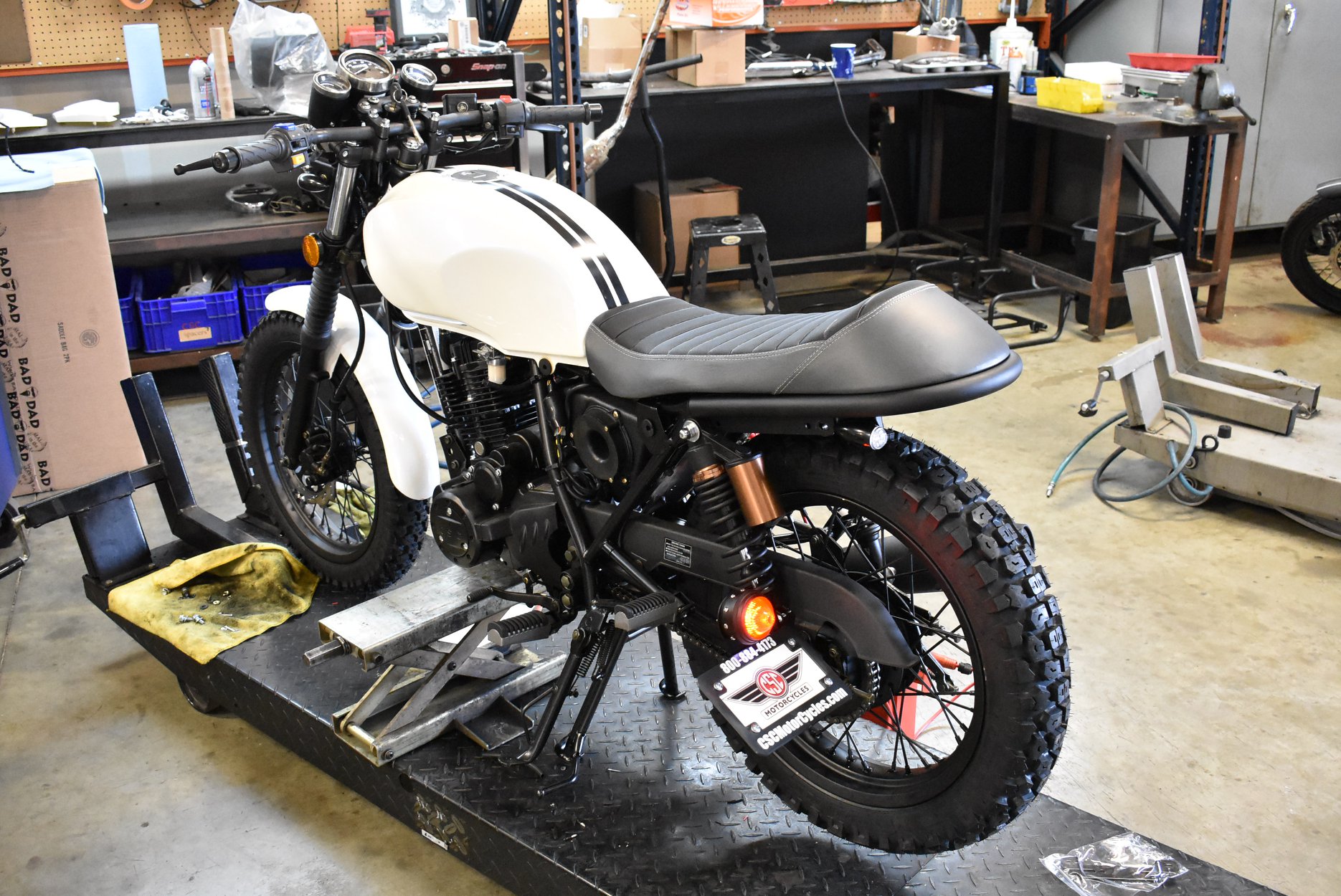

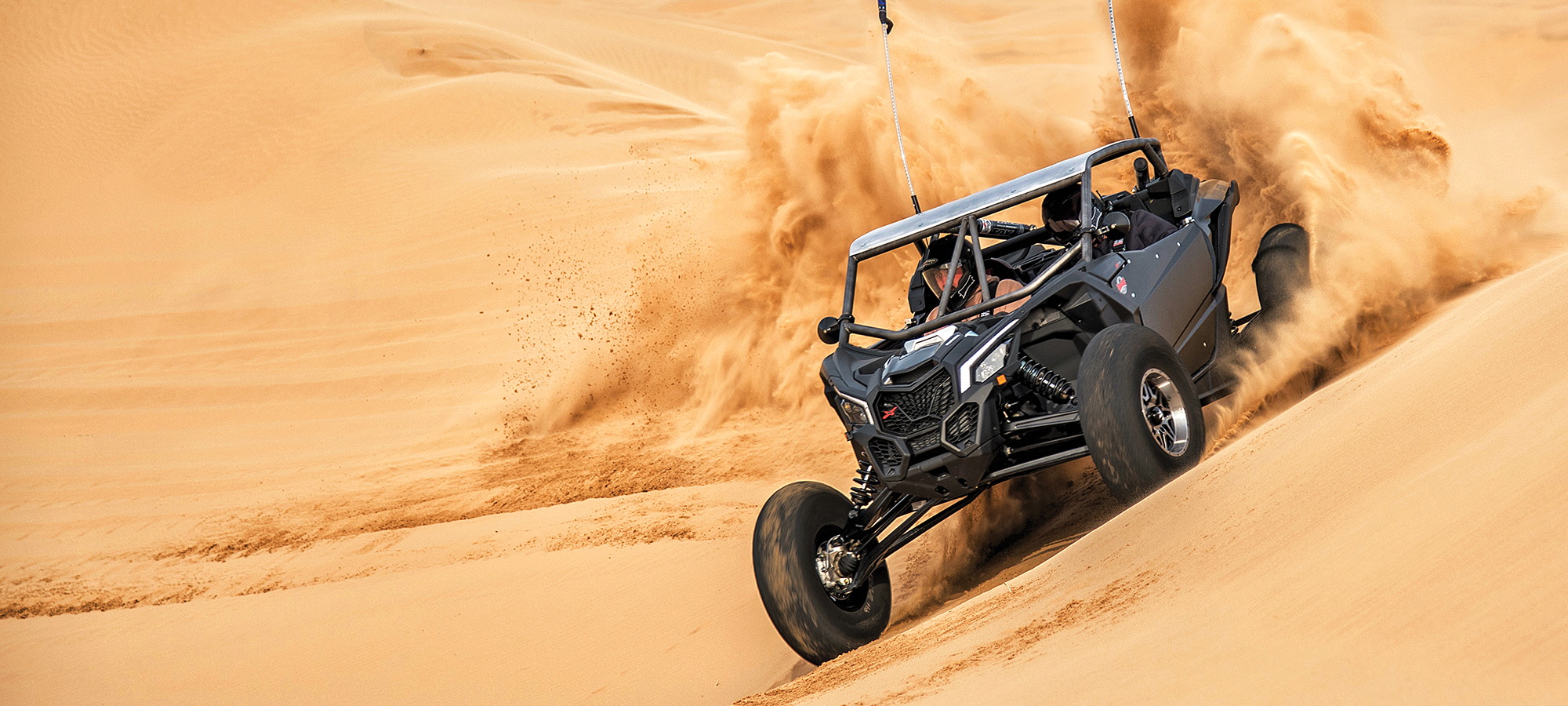
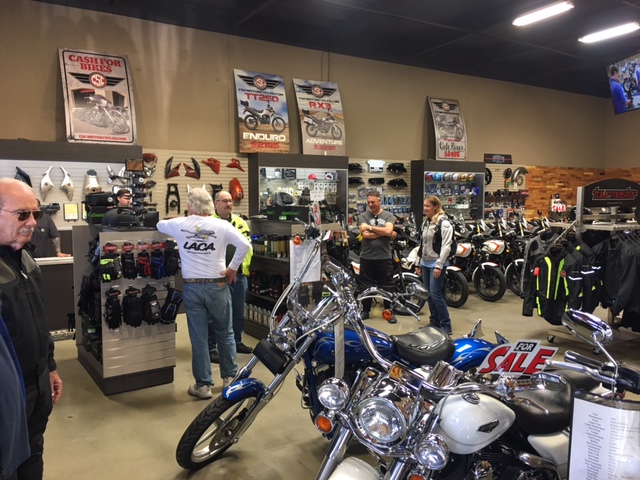

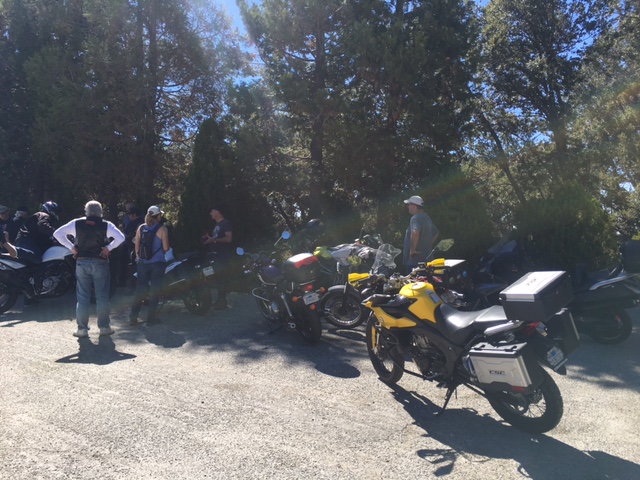
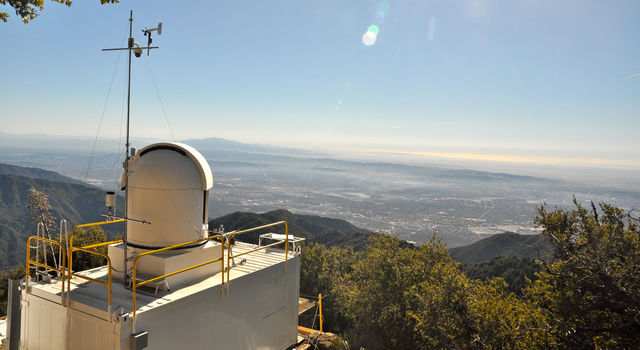
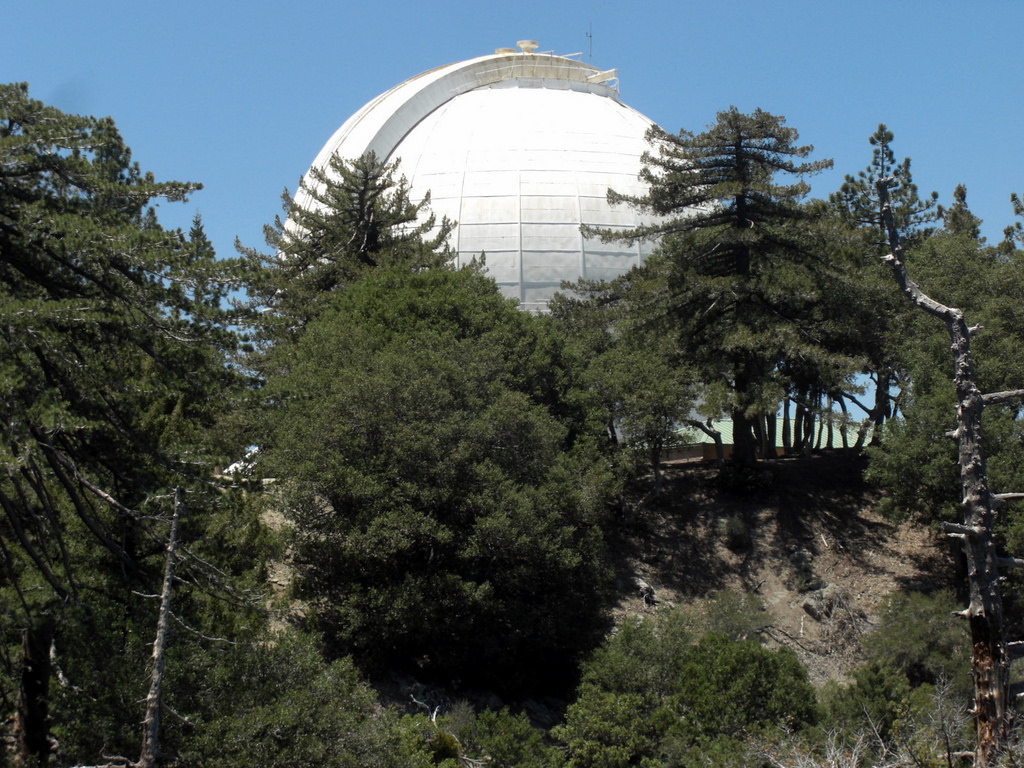
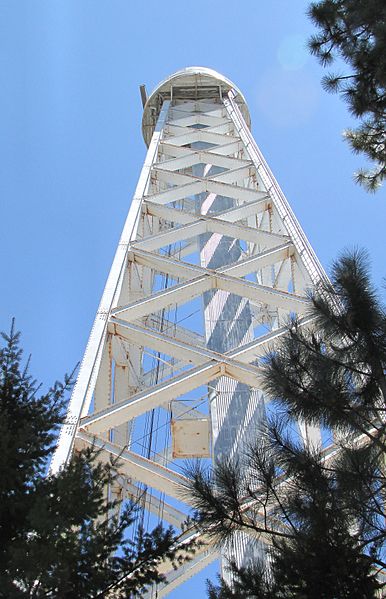

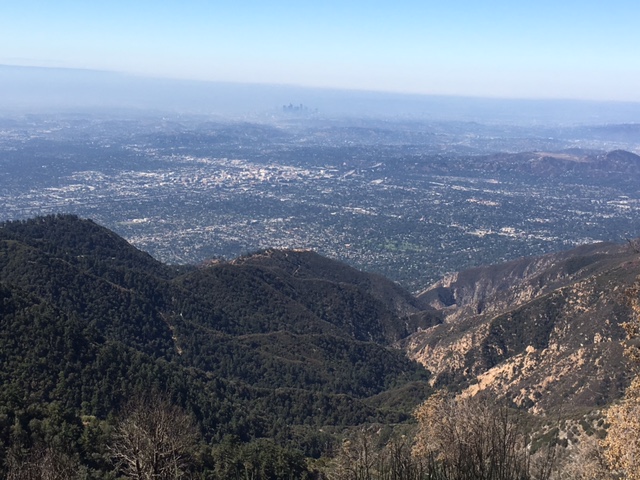
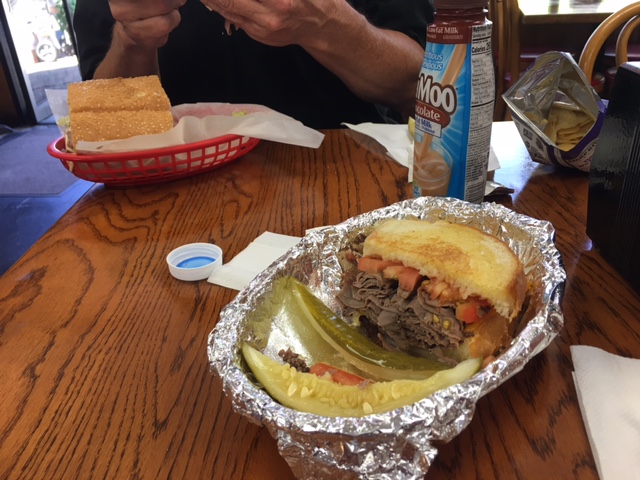
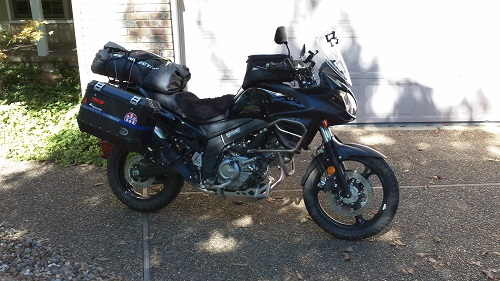
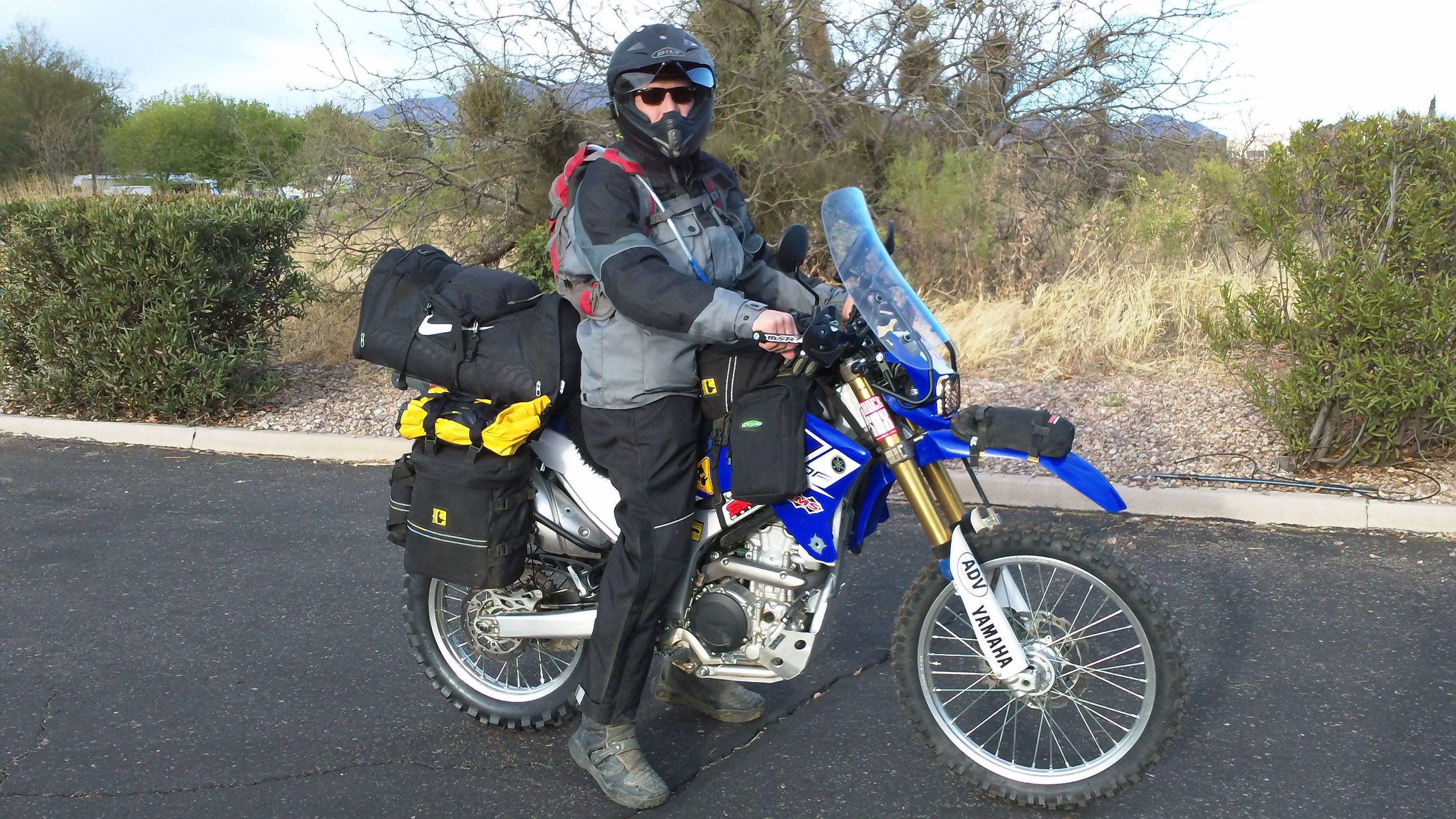

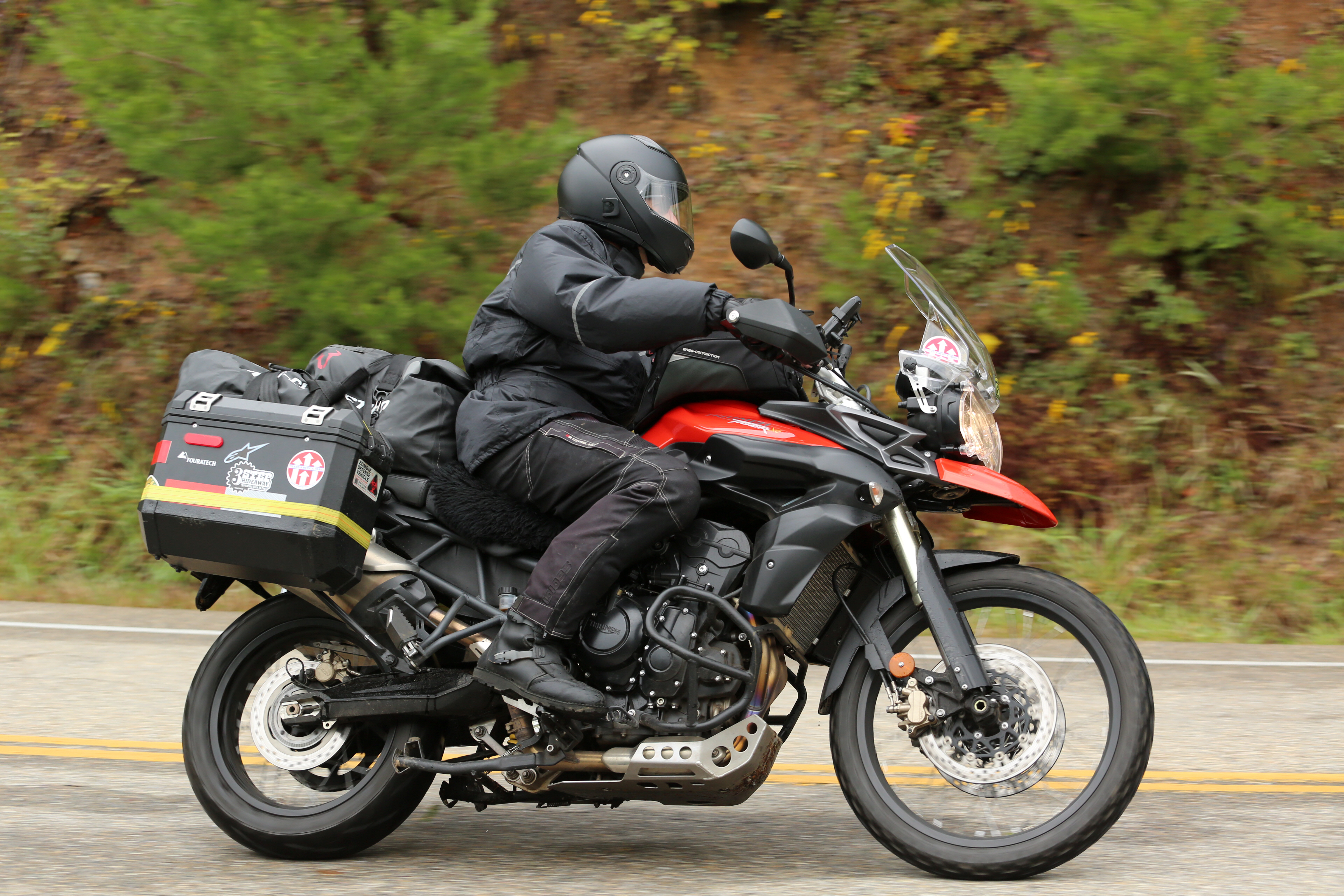

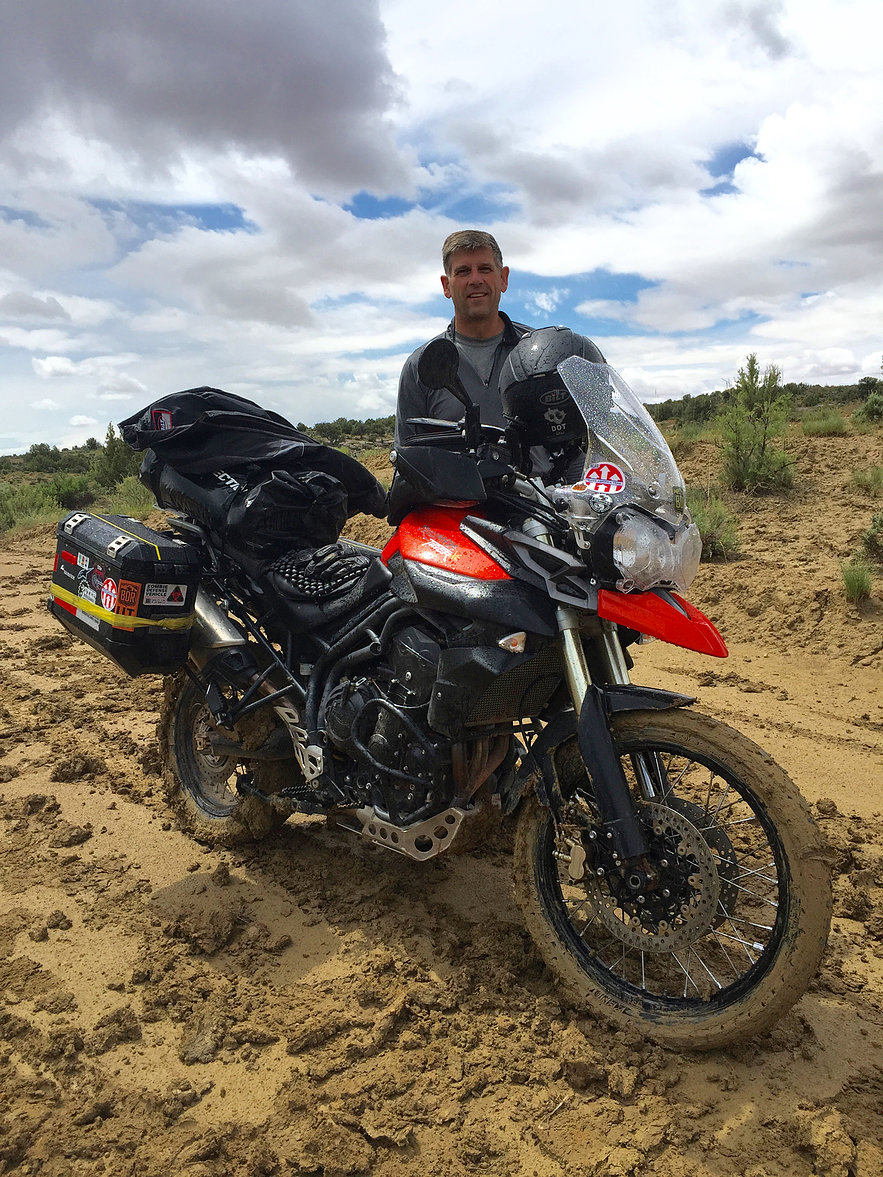

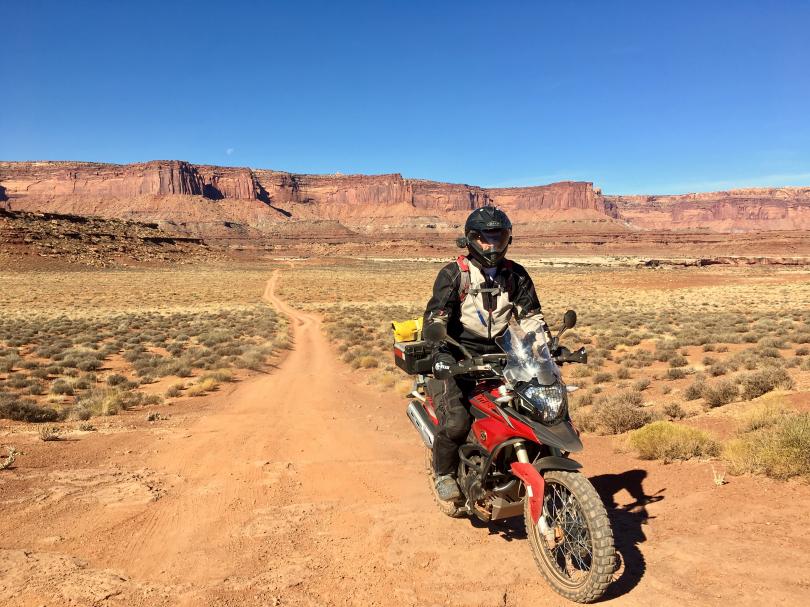
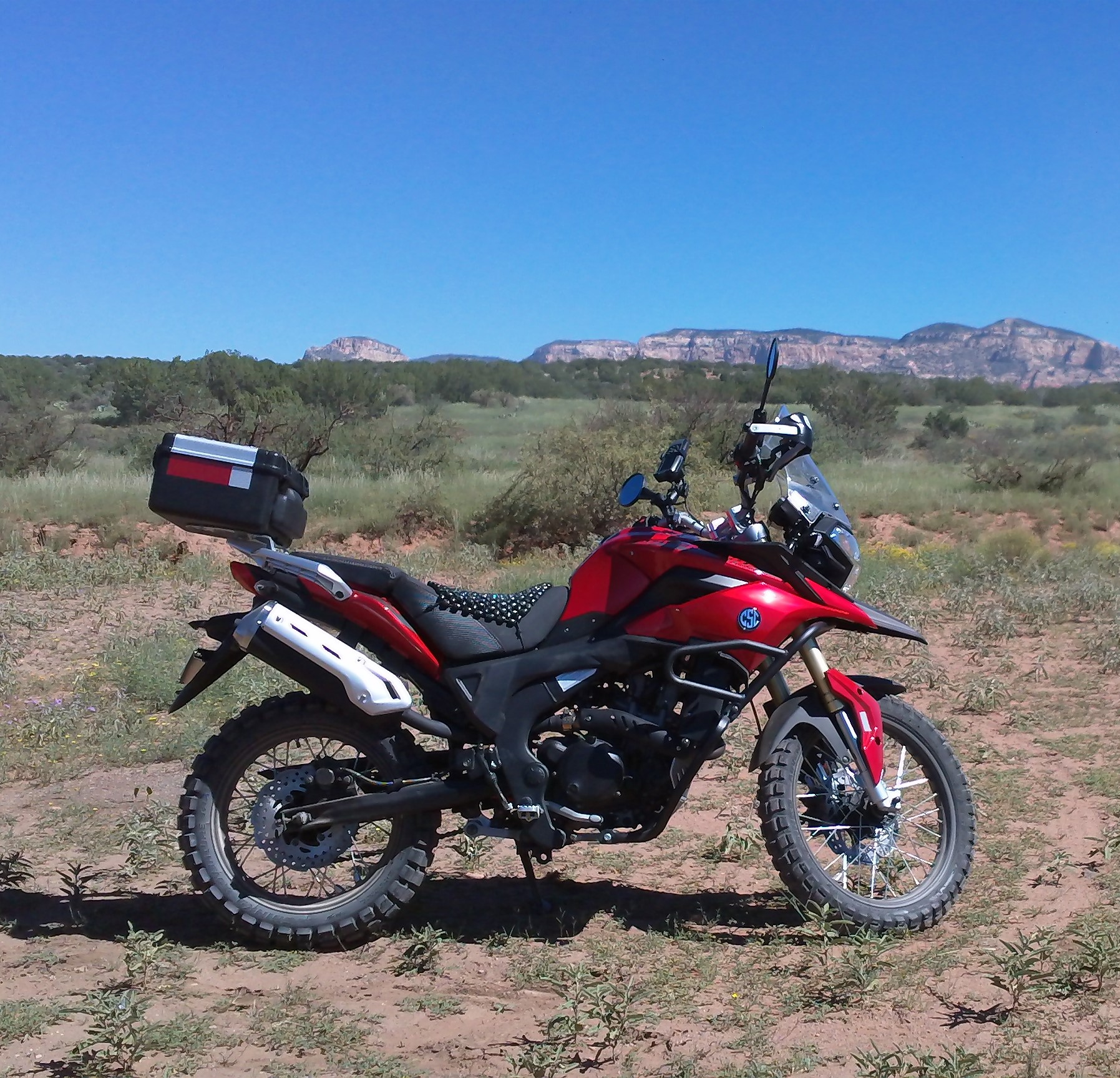

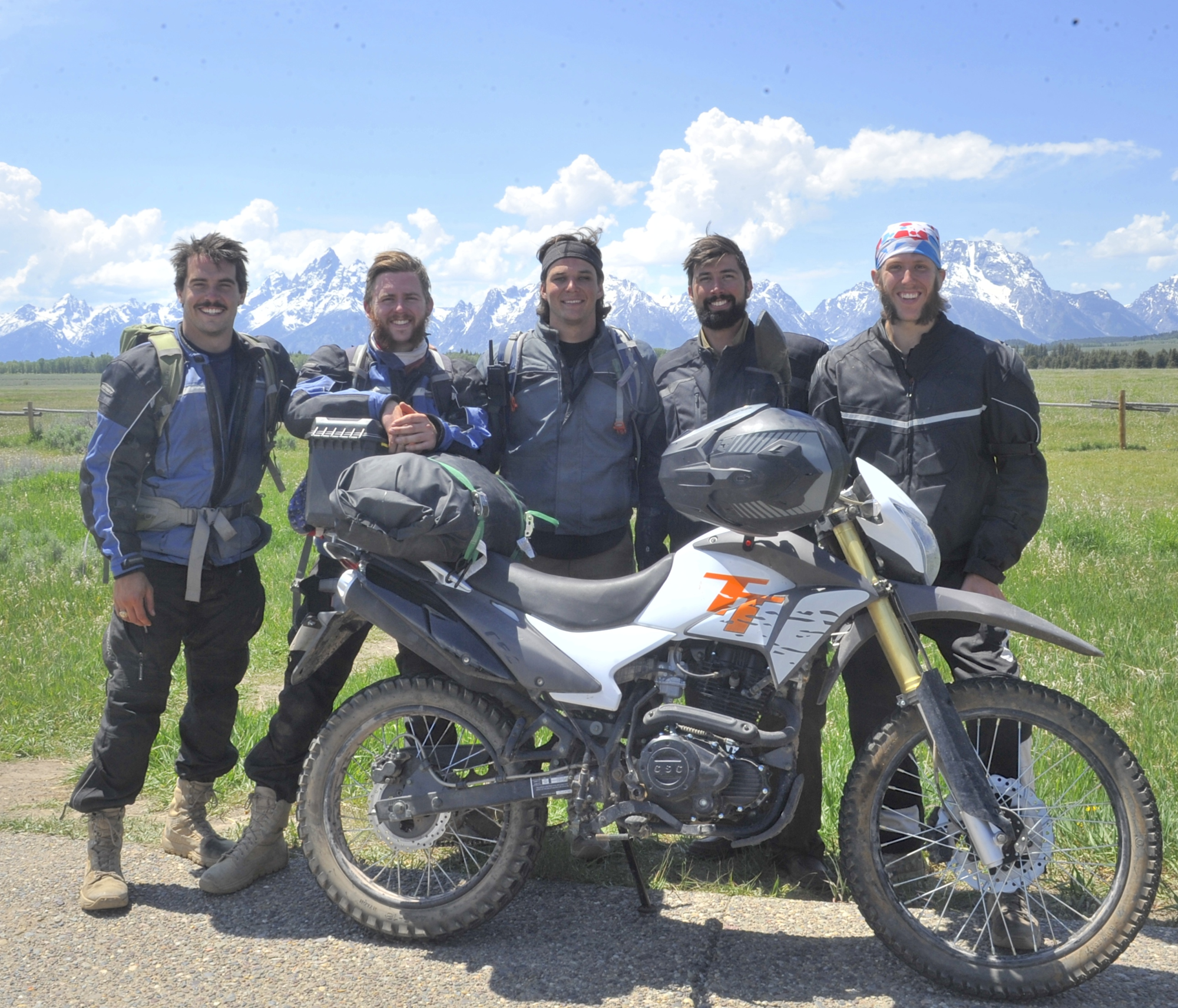
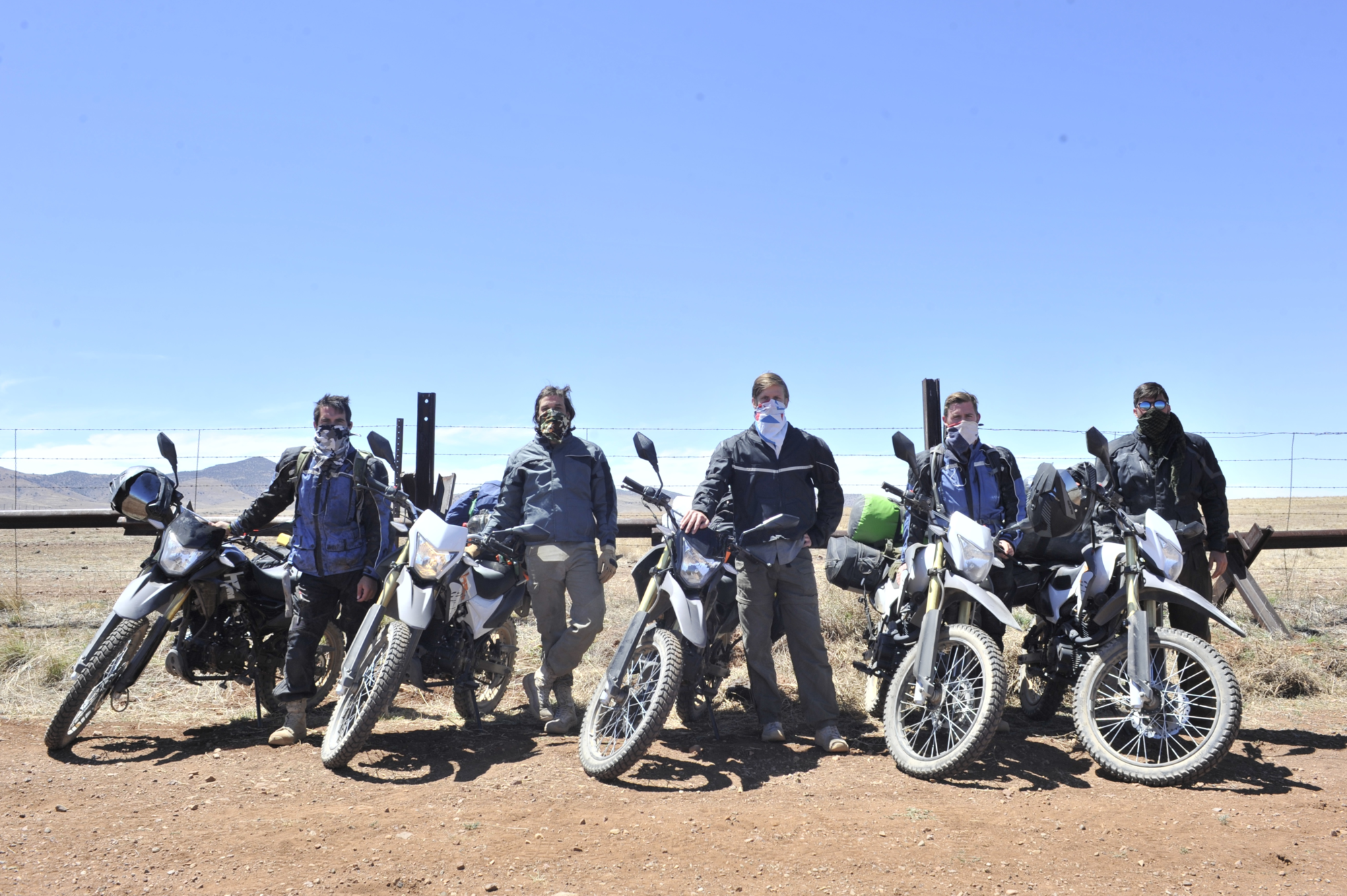
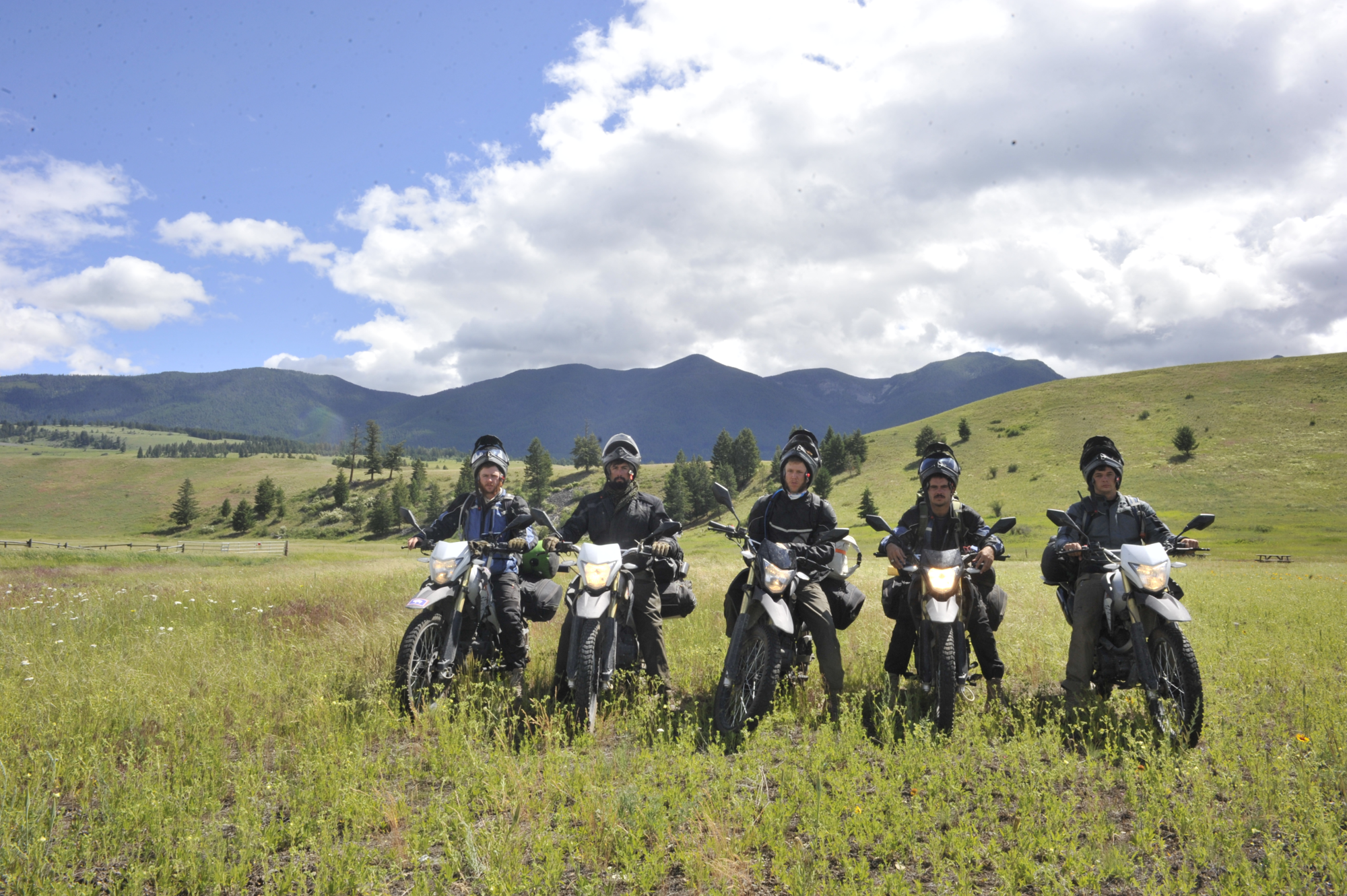







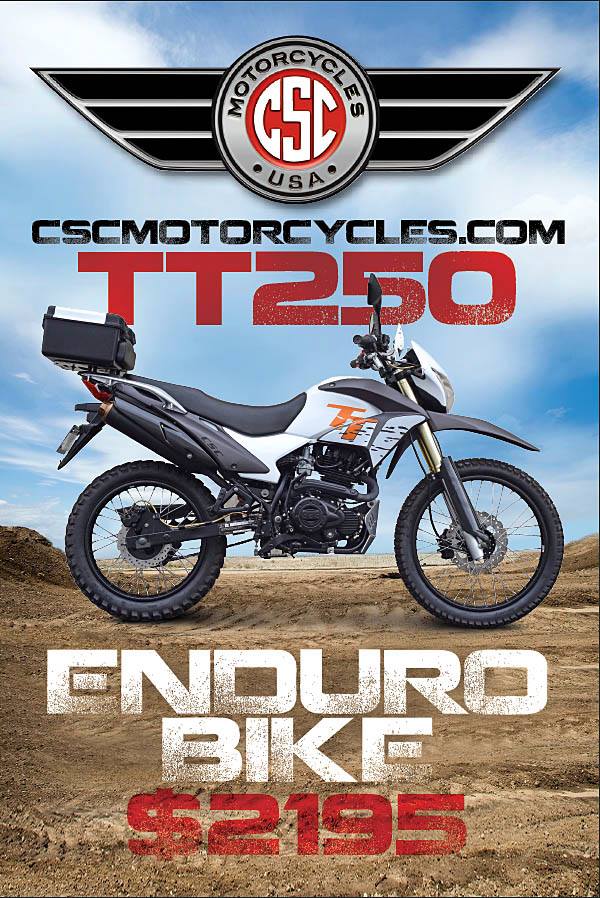
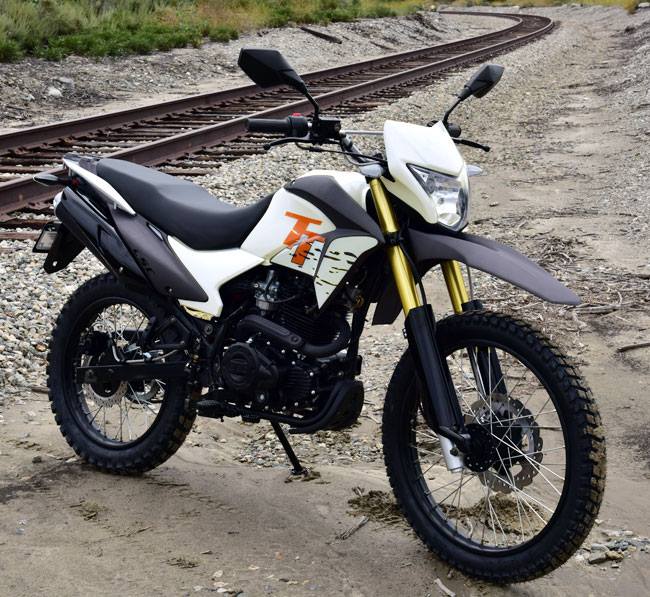
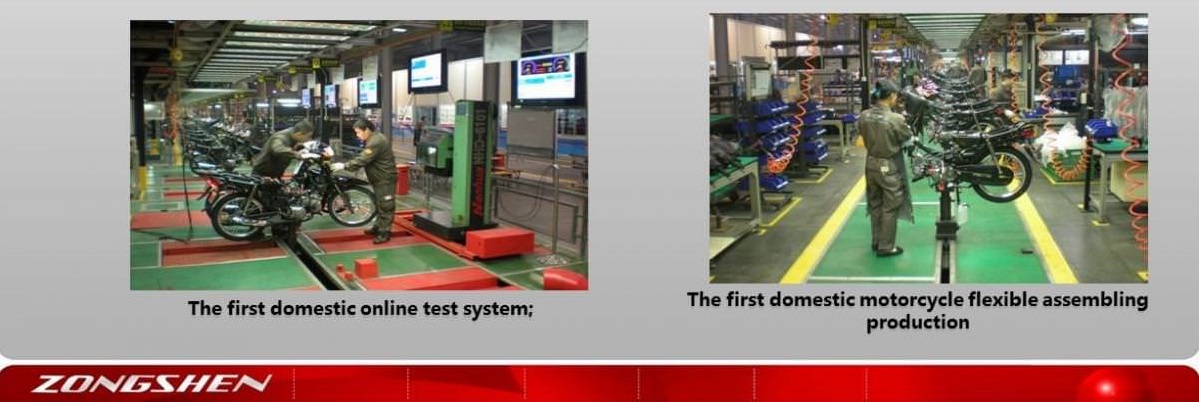

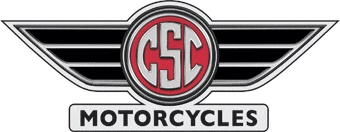
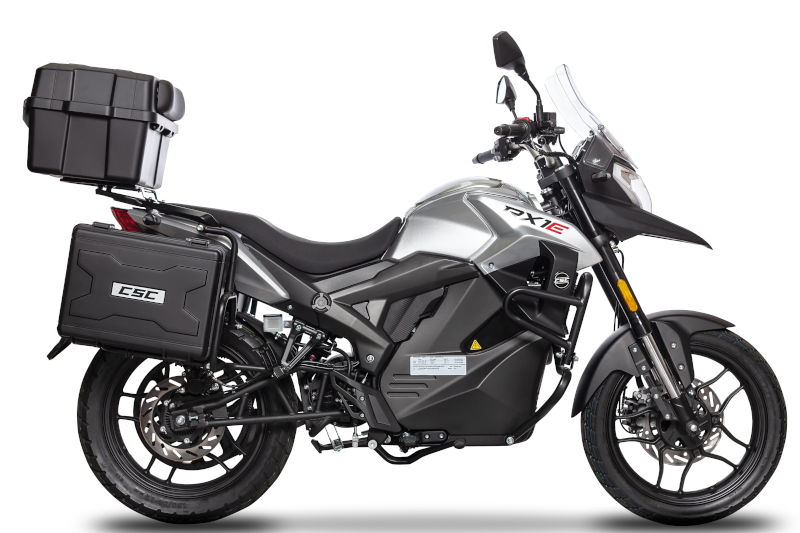 RX1E Electric Motorcycle
RX1E Electric Motorcycle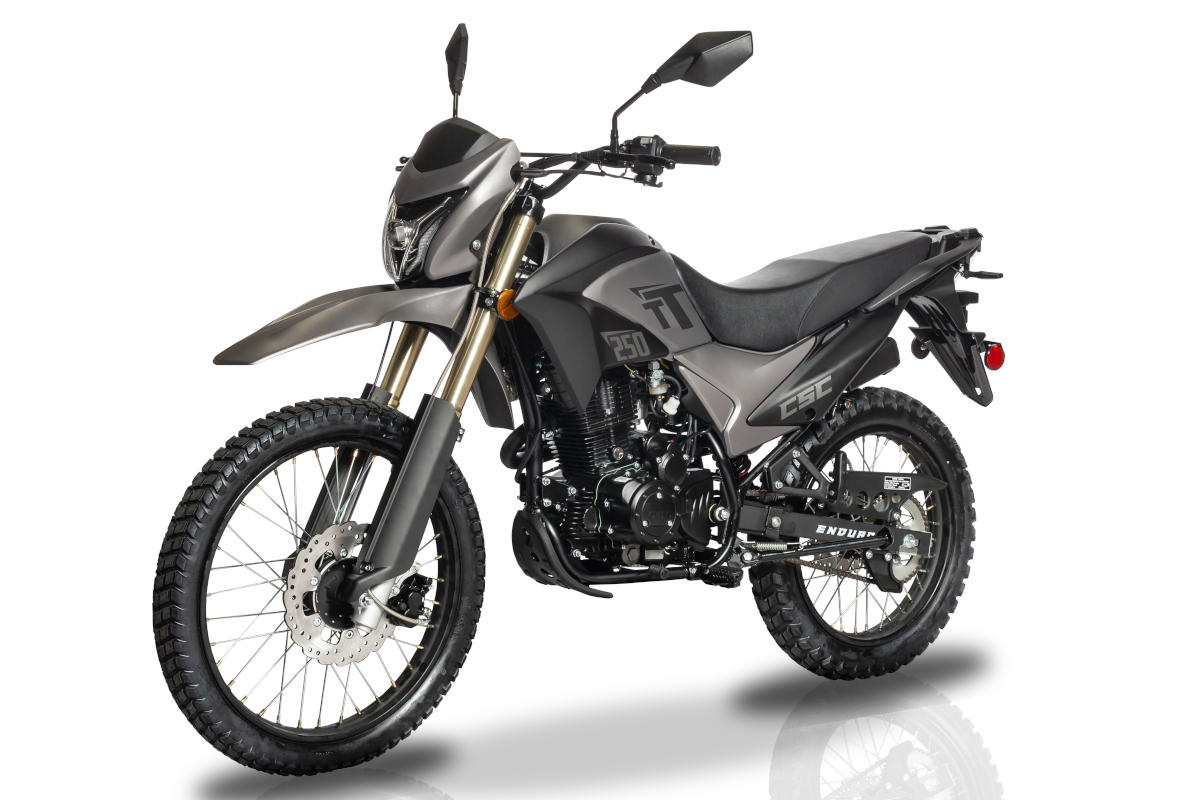 TT250 Enduro
TT250 Enduro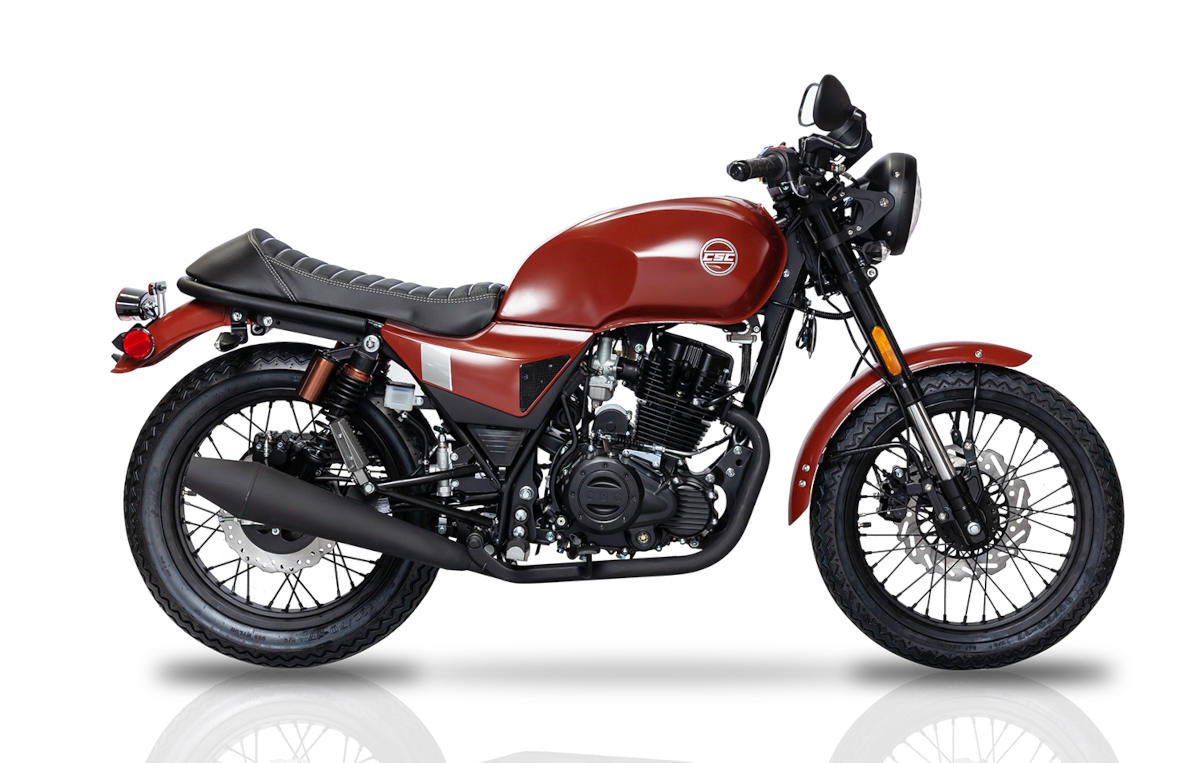 SG250 San Gabriel Cafe Racer
SG250 San Gabriel Cafe Racer